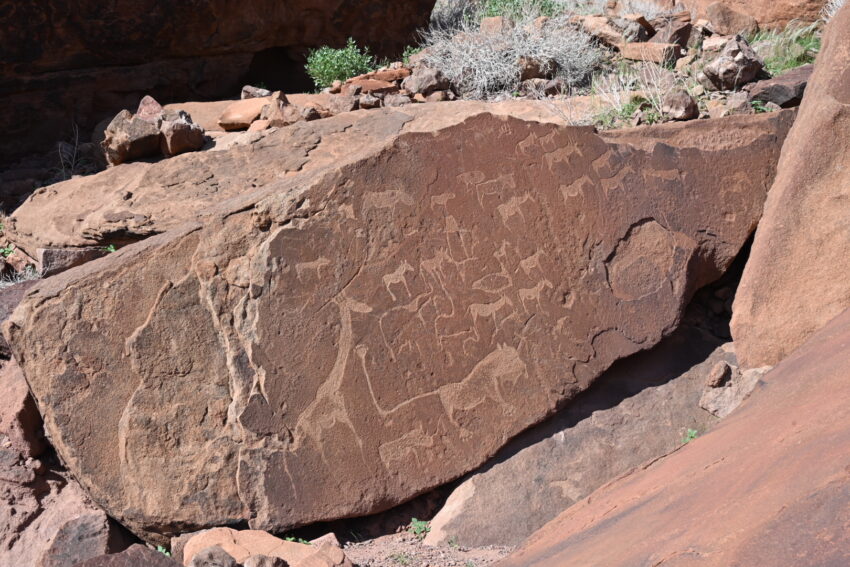We’ve got a long drive ahead of us today – heading north along the highway to the seal colony at Cape Cross, then inland to visit Twyfelfontein in Damaraland. We grab another quick, tasty breakfast at the Organic Stay Guesthouse and some food to go, as well.
There aren’t really any restaurants between here and Malanrus Tented Camp, so a mini-baguette with some brie and a large pretzel is about as good as we’re going to get. No extra charge for the small lunch, though they don’t have anything to box it up with. Thankfully my wife has kept a few unused Ziploc bags for just this purpose, so we use those instead.
We hit the road at 7:30 am, enjoying the silky-smooth tarmac while it lasts. There’s a brief stop in Harris while Ewald fuels up, and one more bathroom break. There’ll be another stop at Cape Cross but otherwise it’s ‘bushy bushy’ or bust.
We stop briefly to admire one of the shipwrecks:
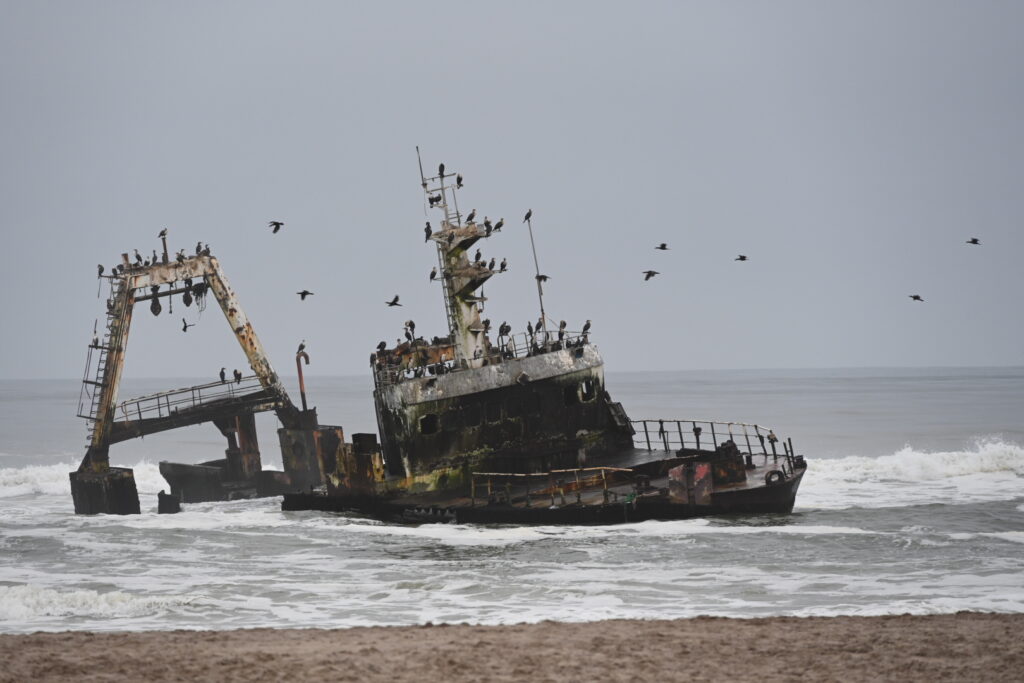
The ship initially capsized closer to Walvis Bay, but wind and ocean currents pushed it further north.
Then we carry on to the Cape Cross seal colony, enjoying some podcasts:
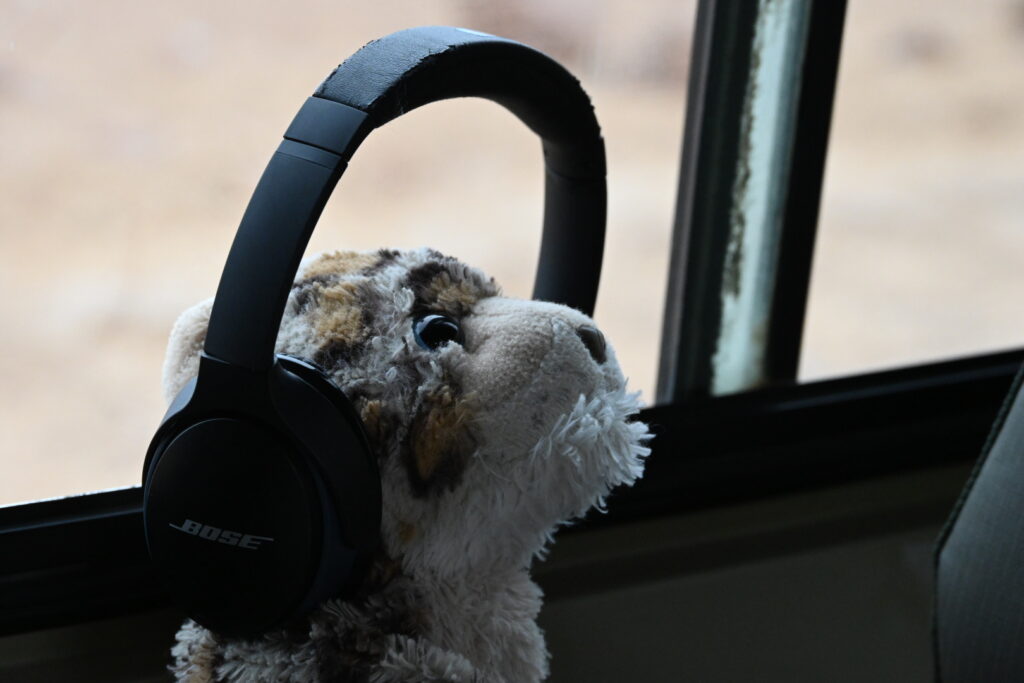
And admiring the beautiful scenery as we go:

Including some lichen fields that are fenced off to protect them against off-road driving. Any damage to the fields could take hundreds of years to heal.
We then reach the Cape Cross national park. Technically they don’t open until 10 am, but Ewald gets us in about 30 minutes early.
It’s just a short drive to the colony:
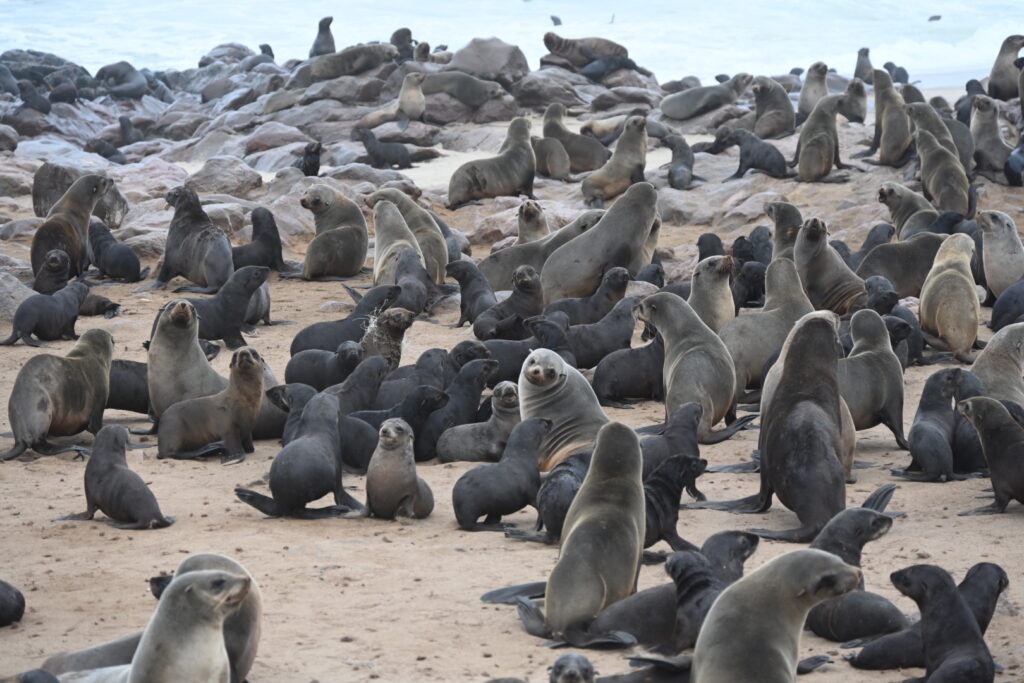

It’s complete bedlam, but the seals are adorable.


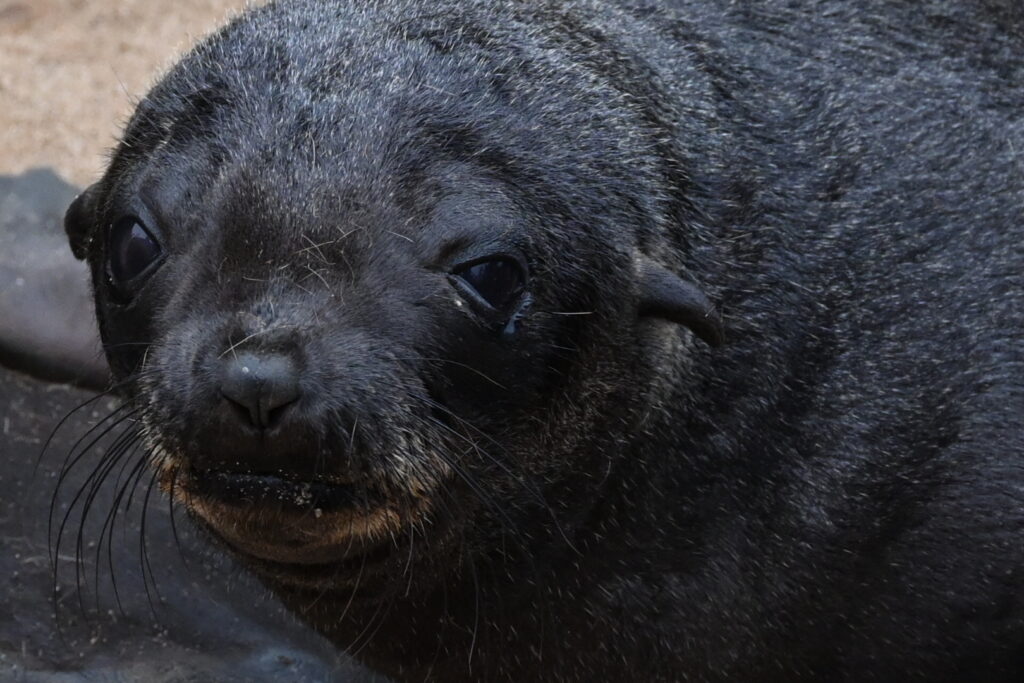
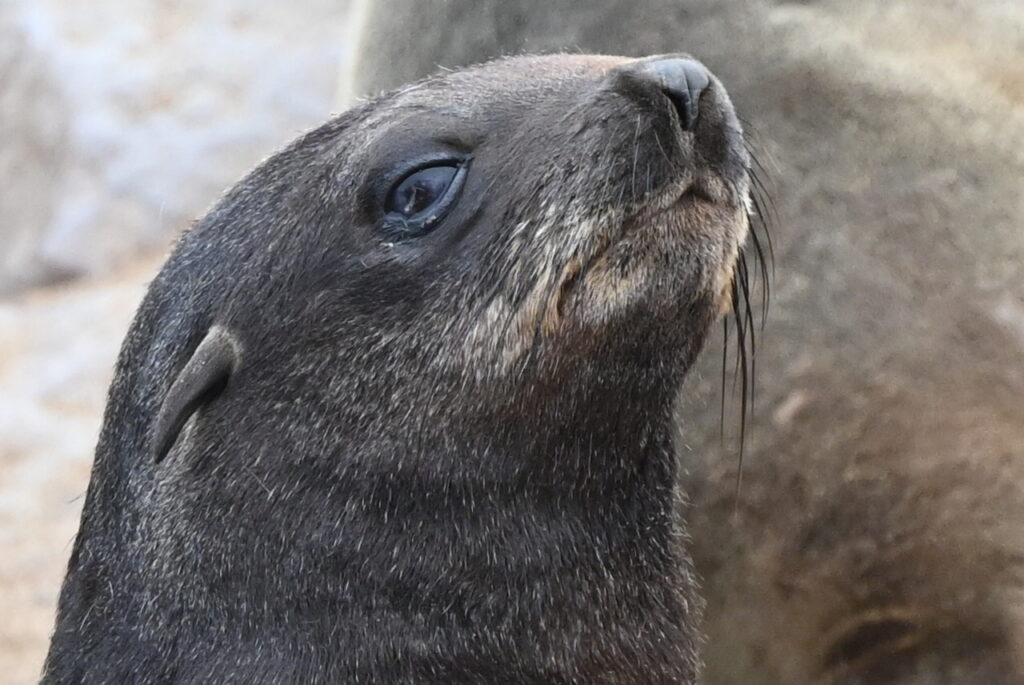
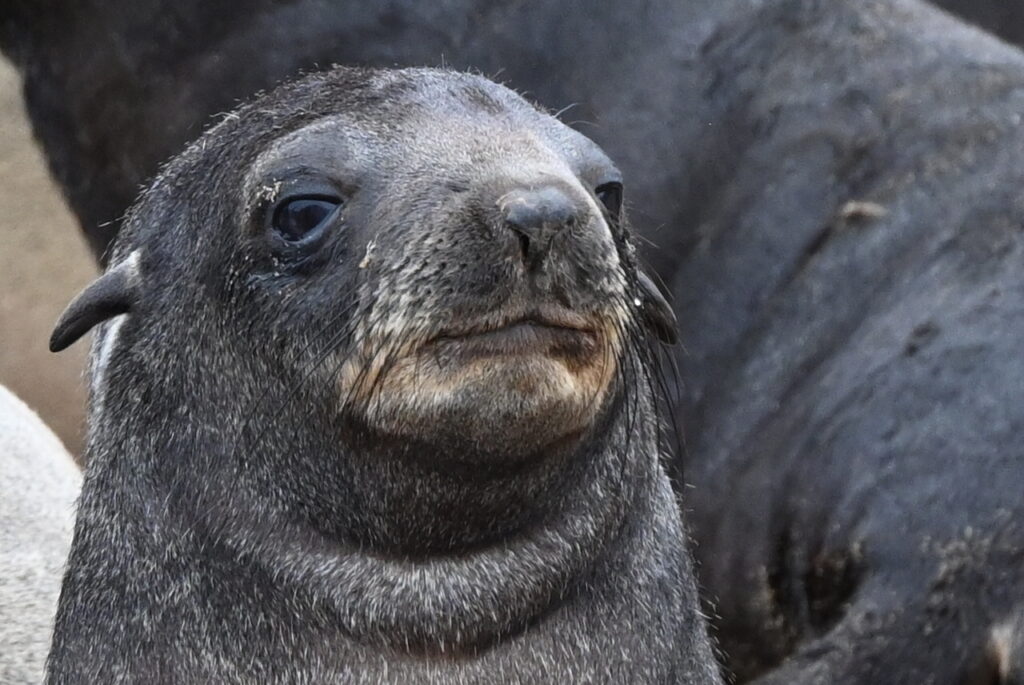
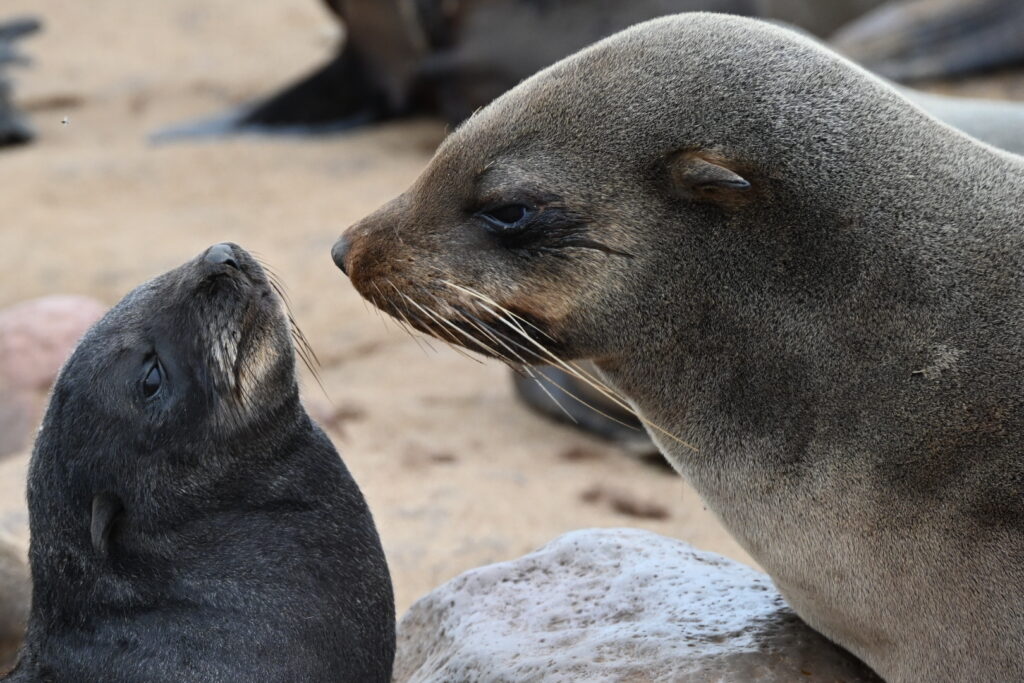
They had to install a fence, otherwise the seals would flop themselves under the parked cars. You can imagine the mayhem that would ensue.
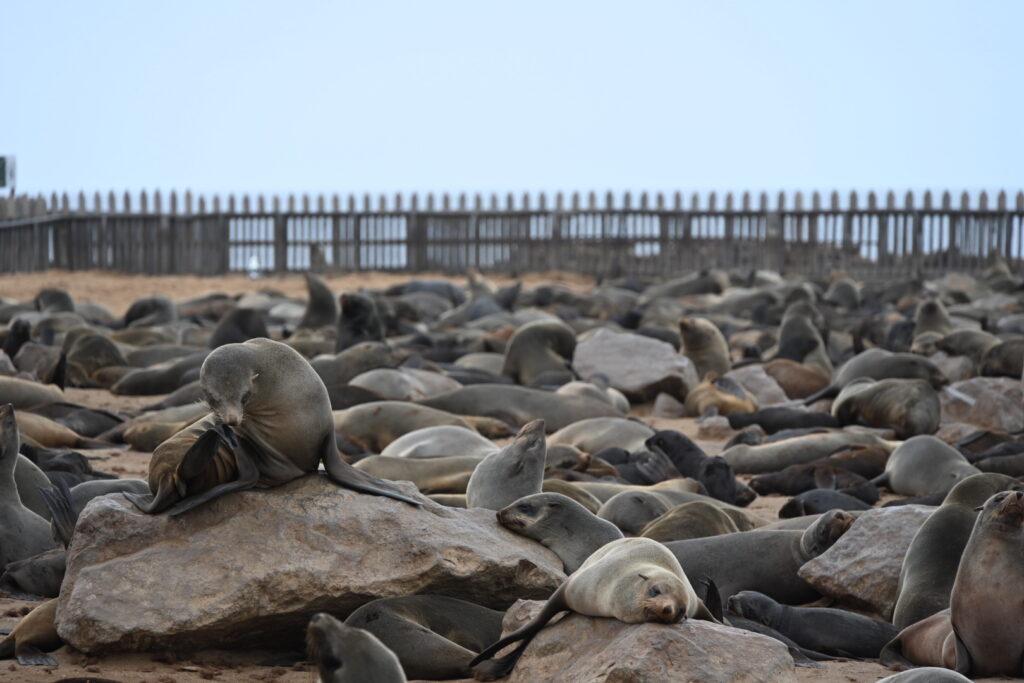
I love how the seals have a passageway under the boardwalk.

Unfortunately, one has managed to breach the fence and has parked himself on the boardwalk.
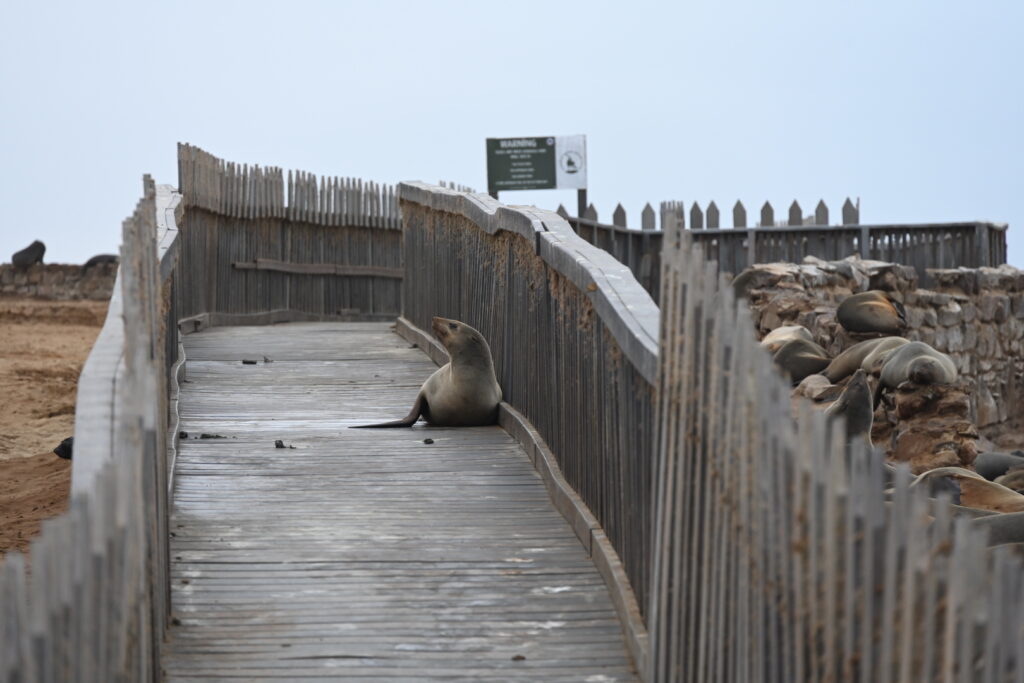
So this is as far as we go.
But there are still more than enough seals to admire:
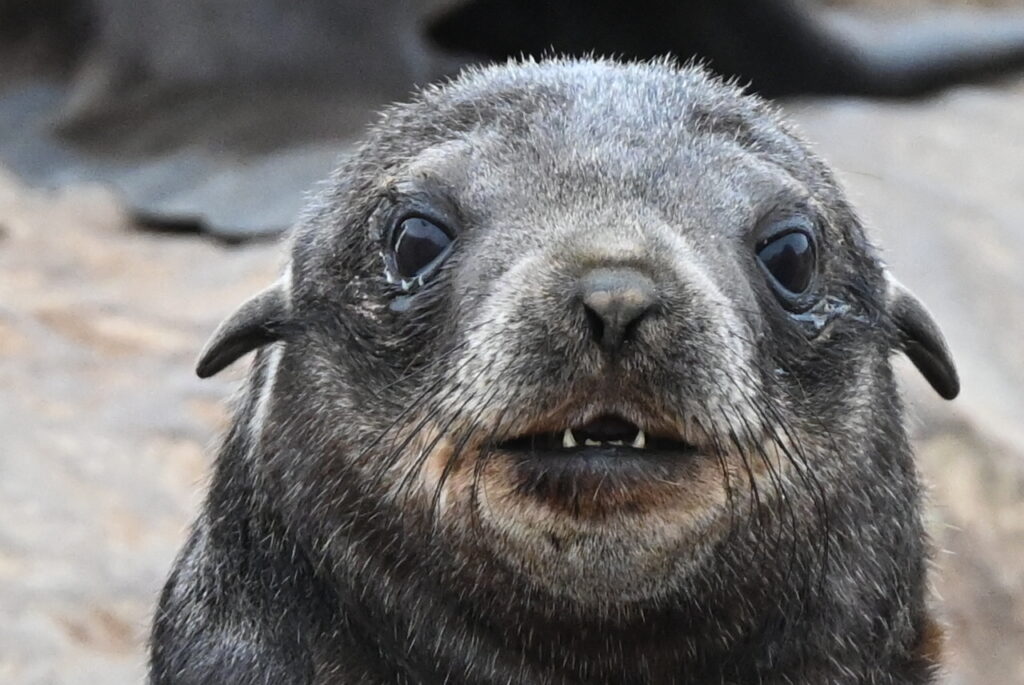
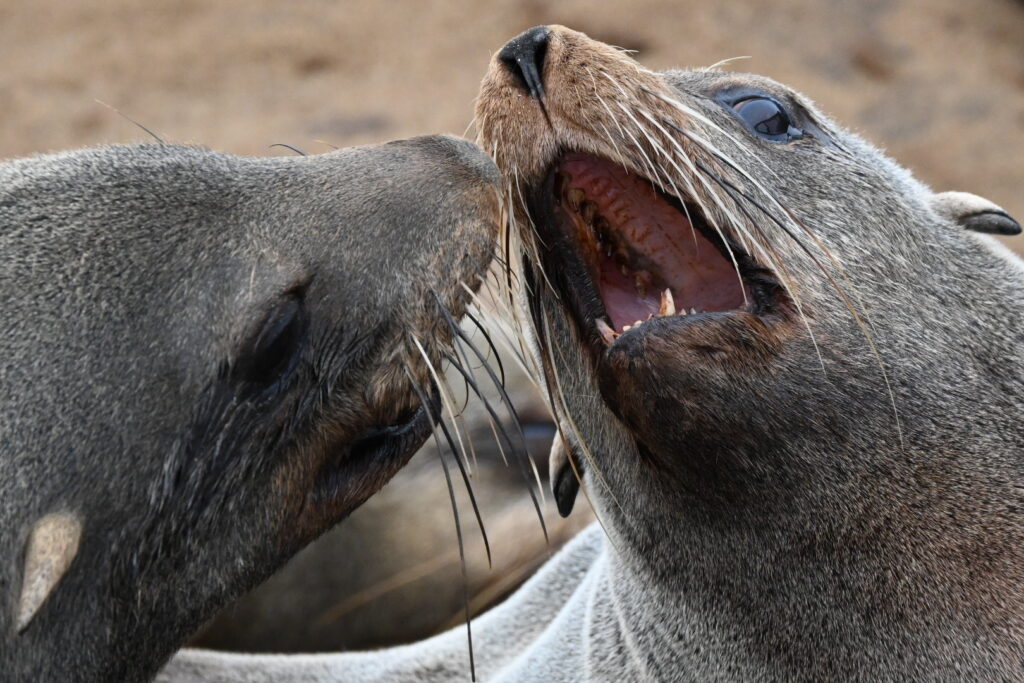
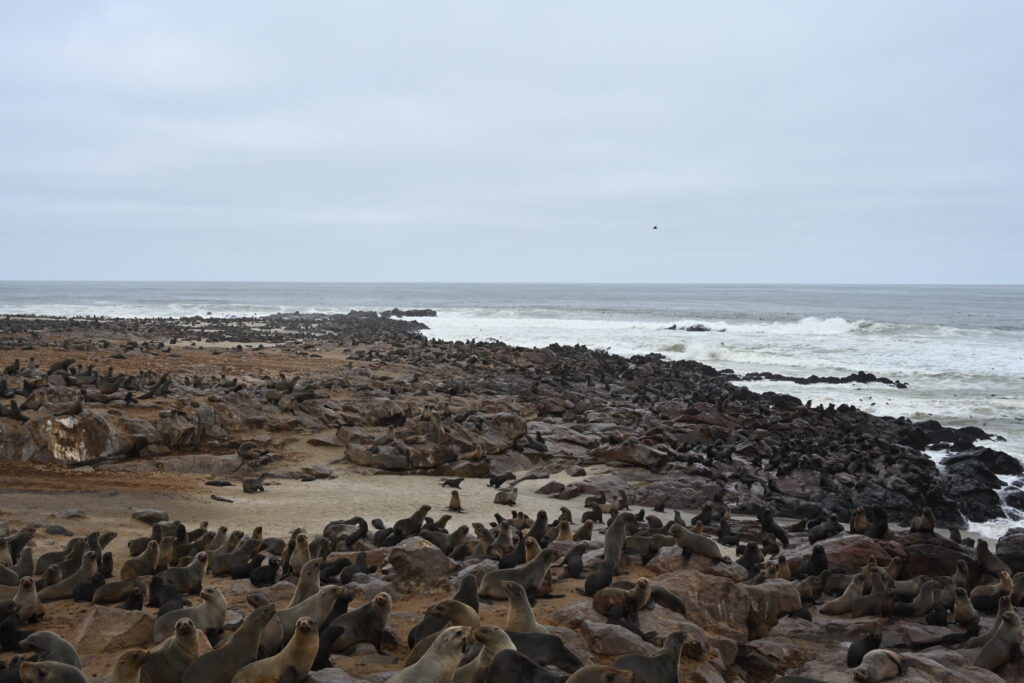
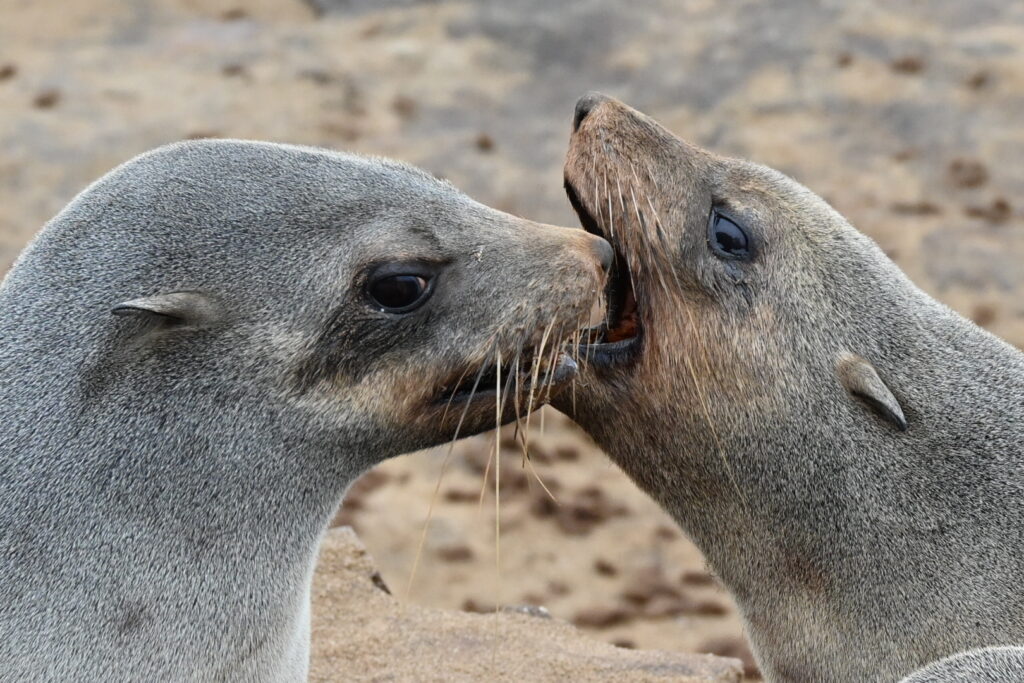
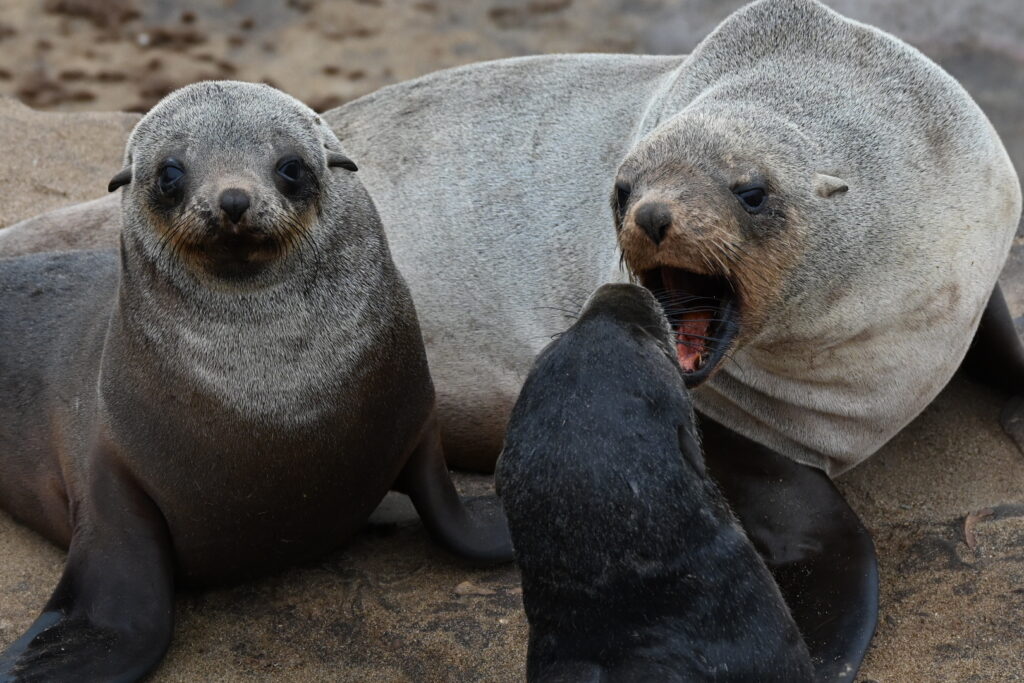
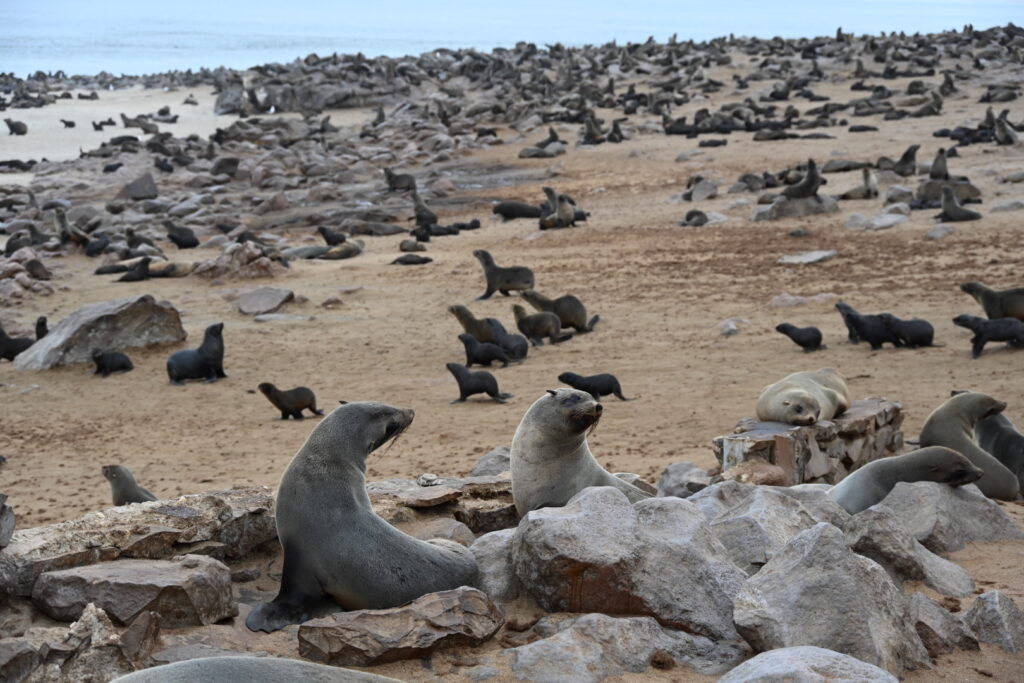
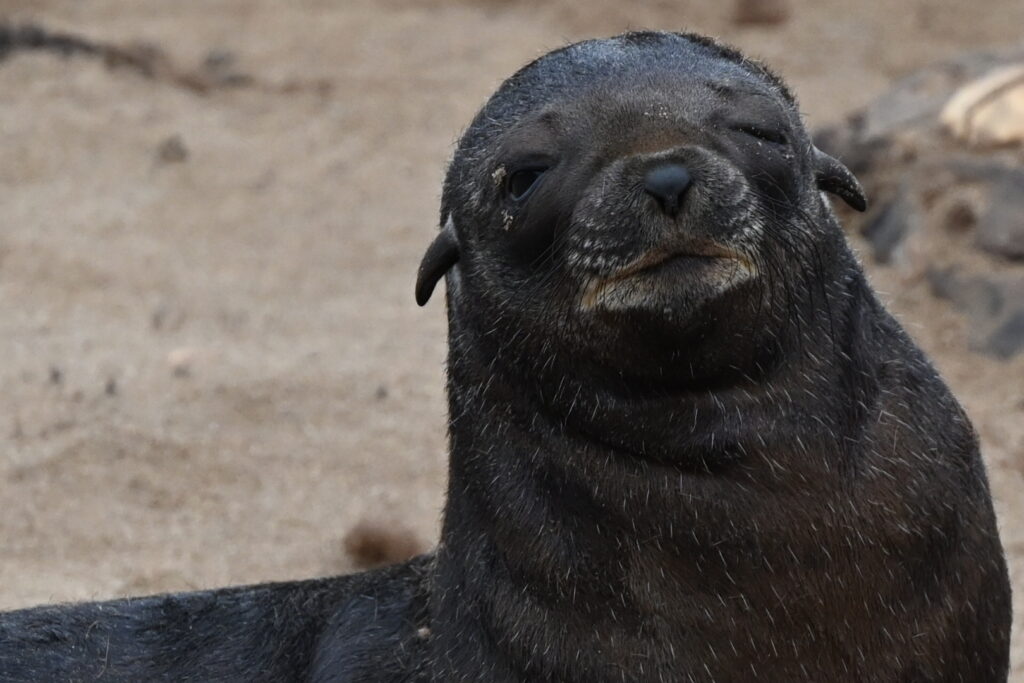
The smell is terrible, however, so we only stick around for about 20 minutes before we’re ready to depart.
We debate which way to go from here – the original itinerary calls for us to continue north to Torra Bay before heading into Damaraland, while Google Maps suggests we shave 40 minutes off our drive by backtracking instead.
Ewald thinks there won’t be much more to see on the skeleton coast, so we elect to backtrack.
Even so, the scenery continues to impress:
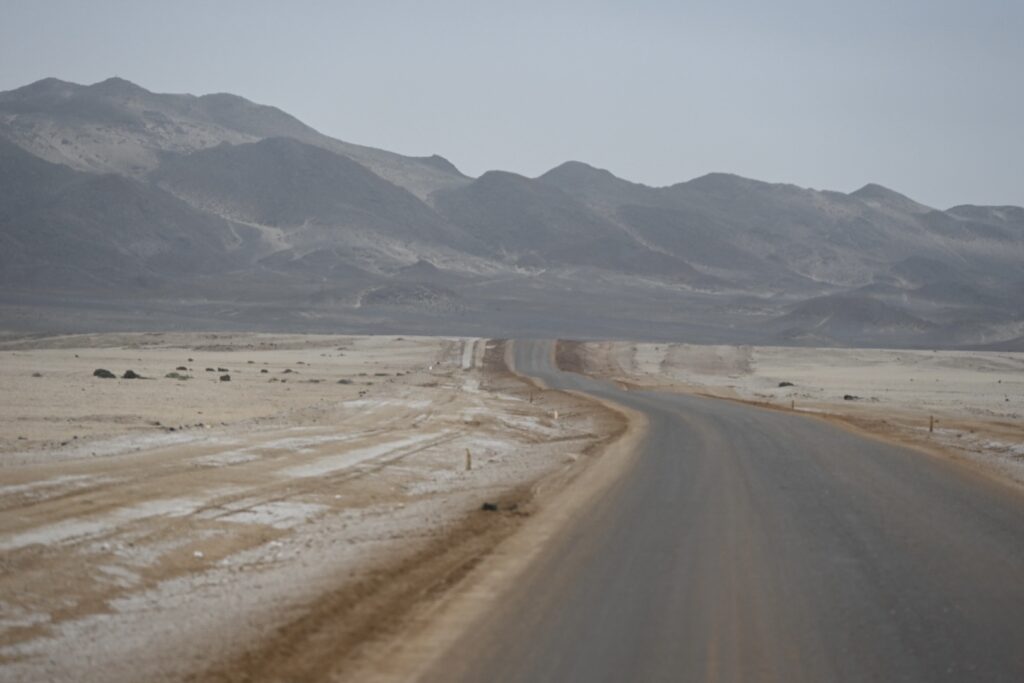
But all good things must come to an end, and we once more find ourselves on washboard roads.
Brandberg Mountain comes into view. It’s the tallest mountain in Namibia, with a height of over 2,500 metres.
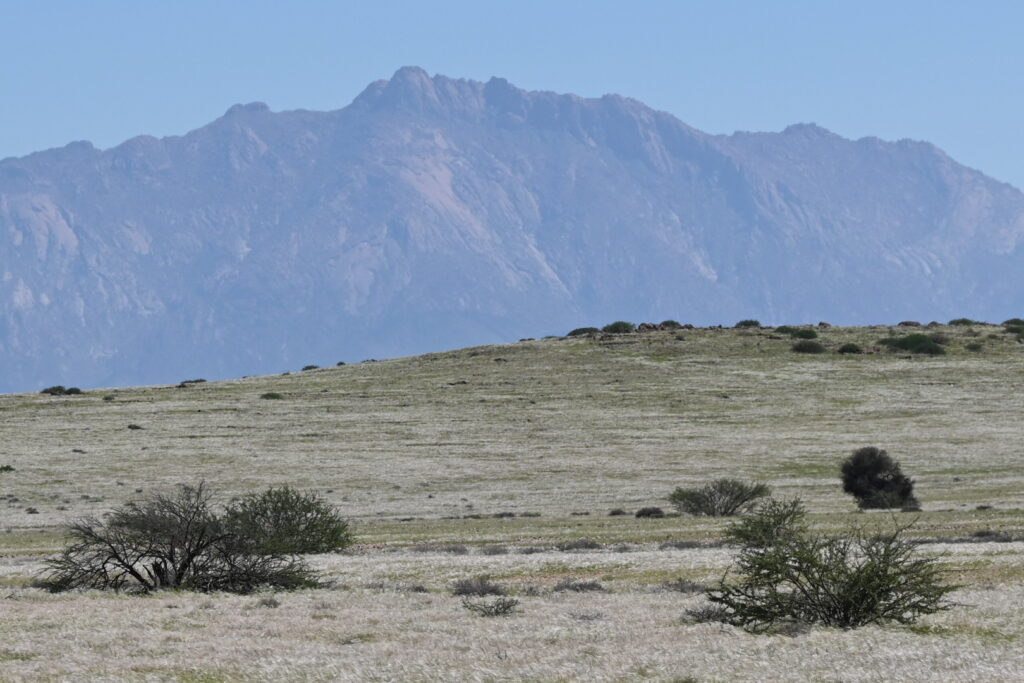
We stop briefly so that Ewald can show us the Euphorbia damarana, a short tree that the Bushmen used to create poison for their arrows.

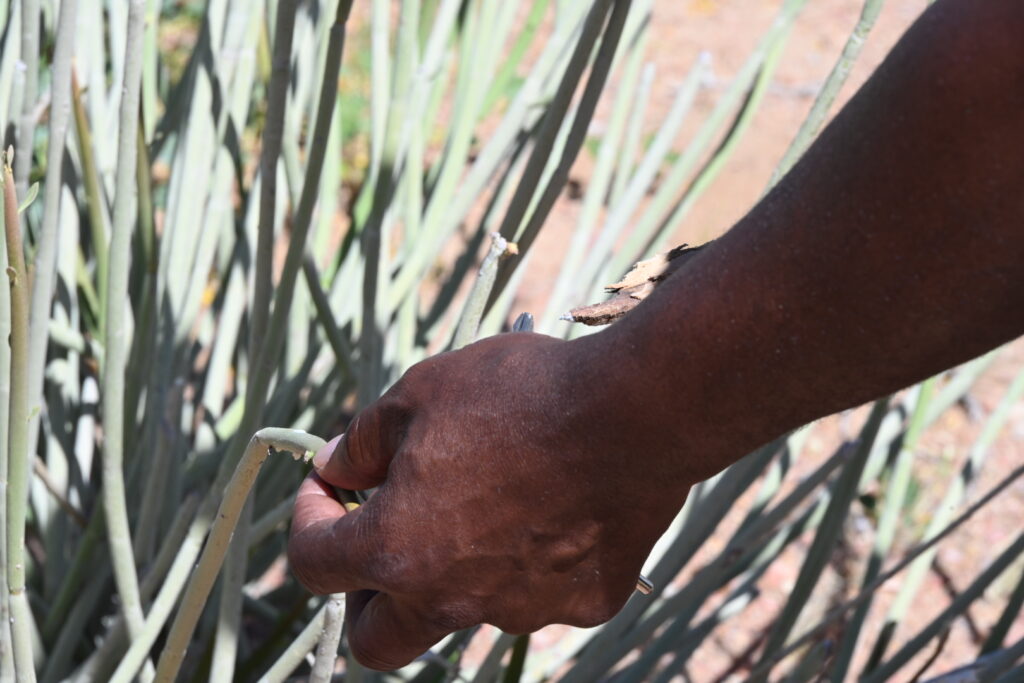
It’s immensely toxic. Some people travelling through the region on the way to Walvis Bay once used the wood from this tree to roast some meat – six died as a result.
Onward into Damaraland, home to the Damara people, which make up more than 8% of the Namibian population. They speak the Khoekhoe language, and are believed to have historically been a culture of hunter-gatherers. Together with the Bushmen, they are among the oldest nations within Namibia.
We cross several riverbeds, keeping our eyes out for desert elephants.

Our itinerary included a ‘track desert elephants’ activity, but this turned out to be an artifact from a previous version that had us staying in Damaraland for two nights. But we’ll see if we can spot some along the way.
The scenery here is striking:
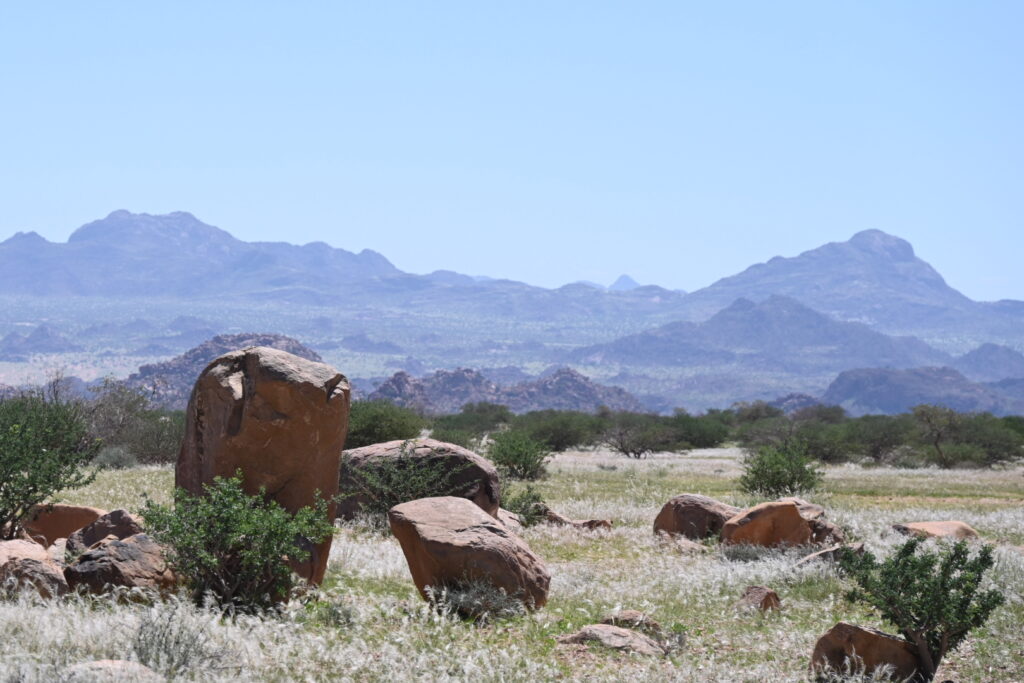
The roads get worse as we carry on, and the heat starts to build.
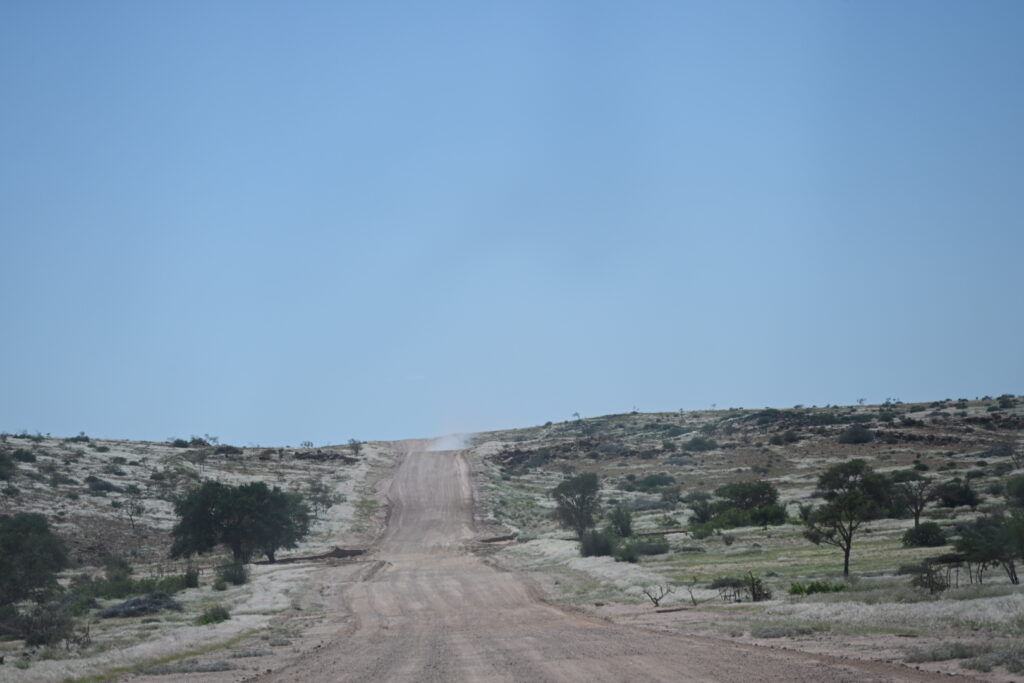
We close the windows to limit the dust, but the air conditioning once more struggles to keep us cool.
But at least we have goats to distract us along the way:

And the stunning scenery:
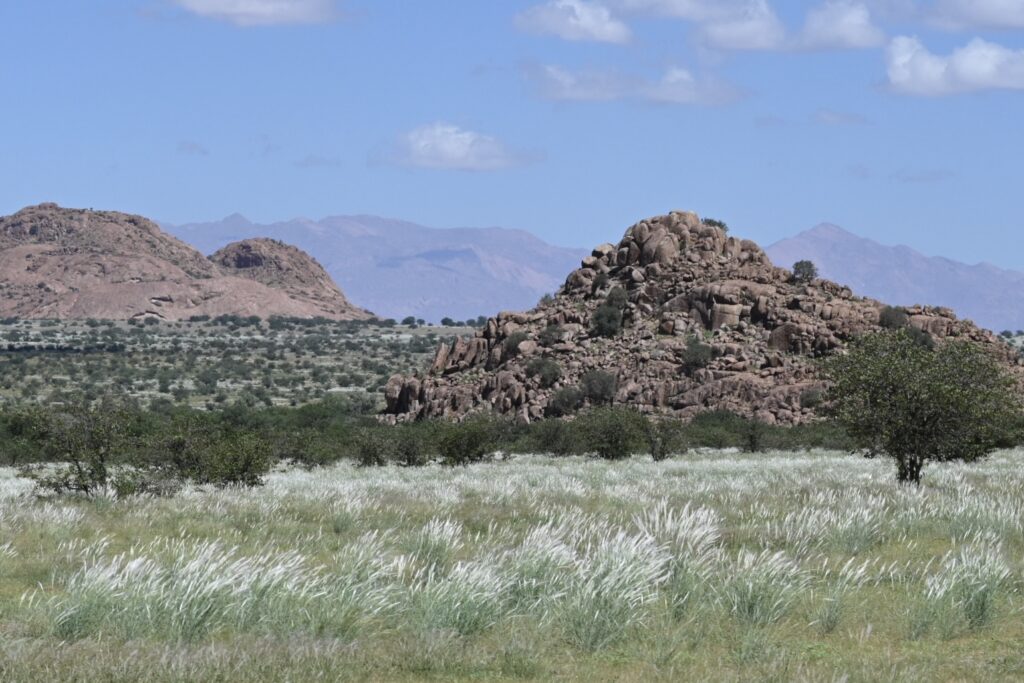
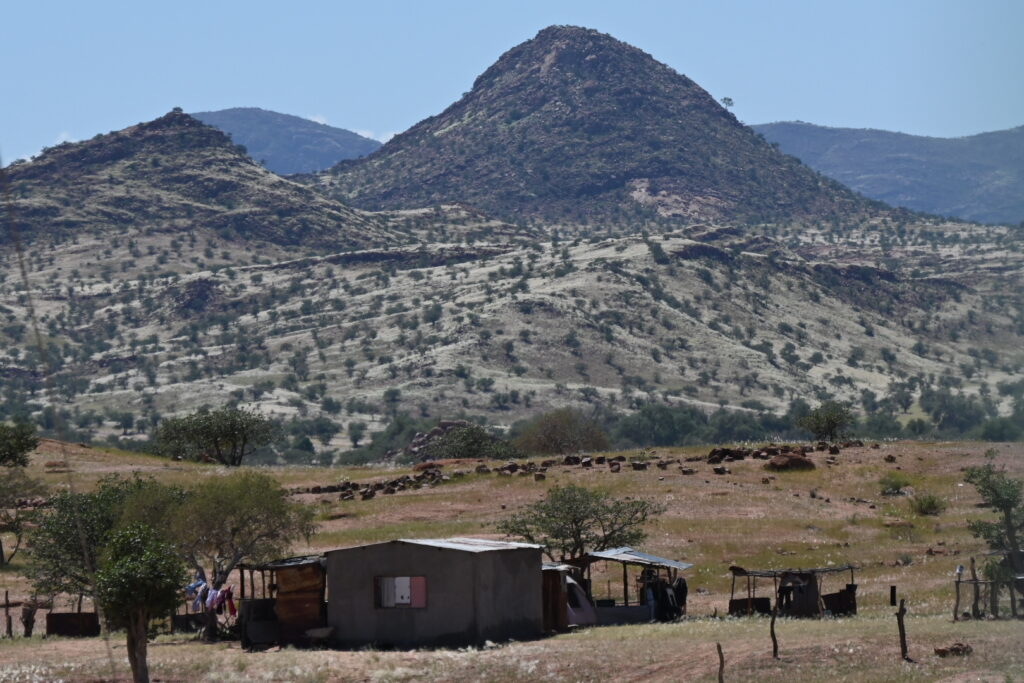

Thankfully we don’t have much further to go – we pull into Malanrus tented camp around 2 pm. Unfortunately, I somehow manage to walk face-first into a massive birdhouse. I have no excuse – I simply wasn’t paying attention.
The good news is that I didn’t break my nose, though I do have a small scrape to remind me to keep my head up.
Anyway, Malanrus is a lovely spot:
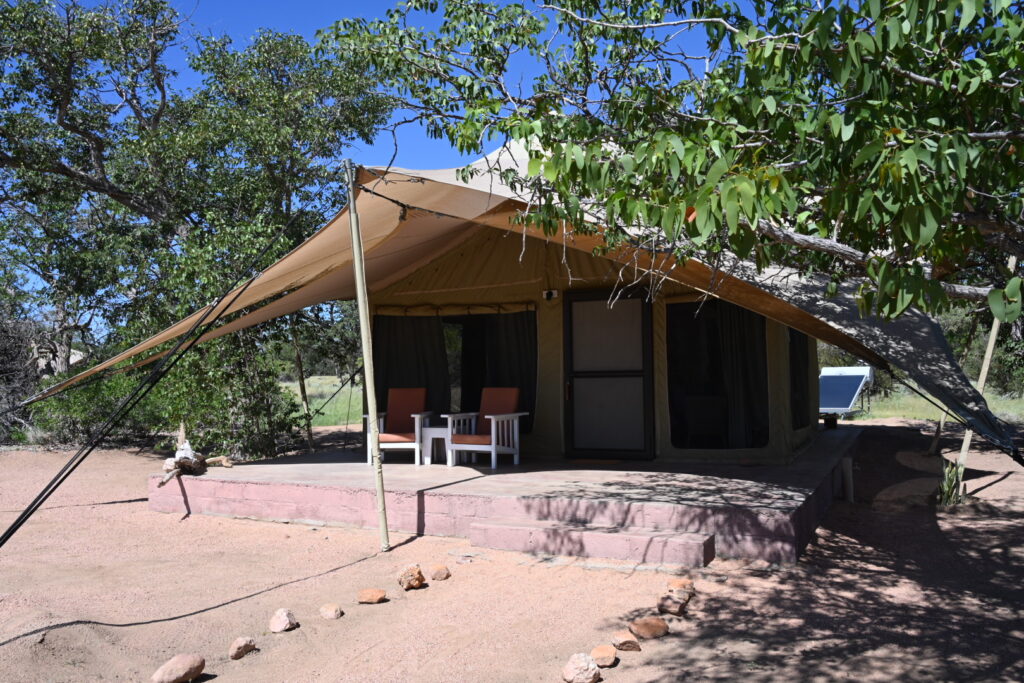
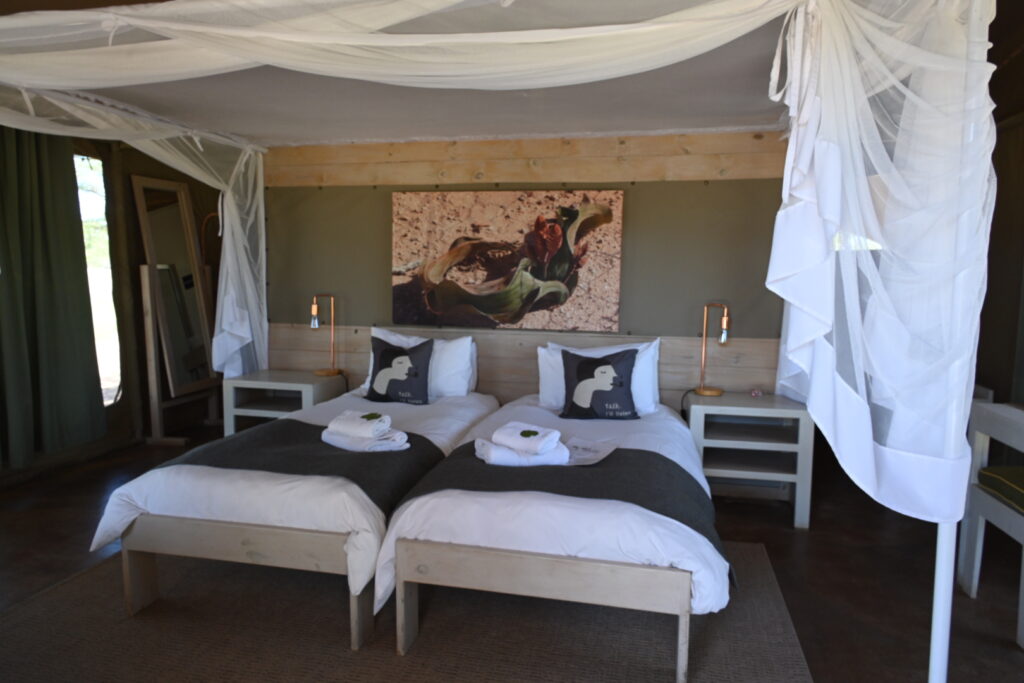
With excellent facilities:
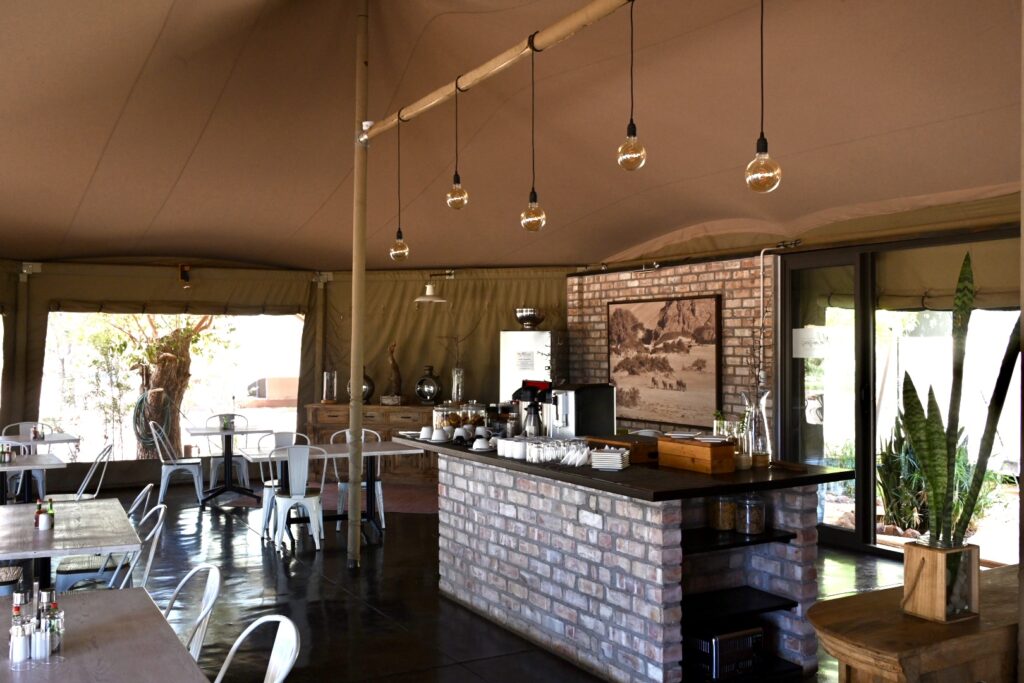
And set amidst the beautiful environs:
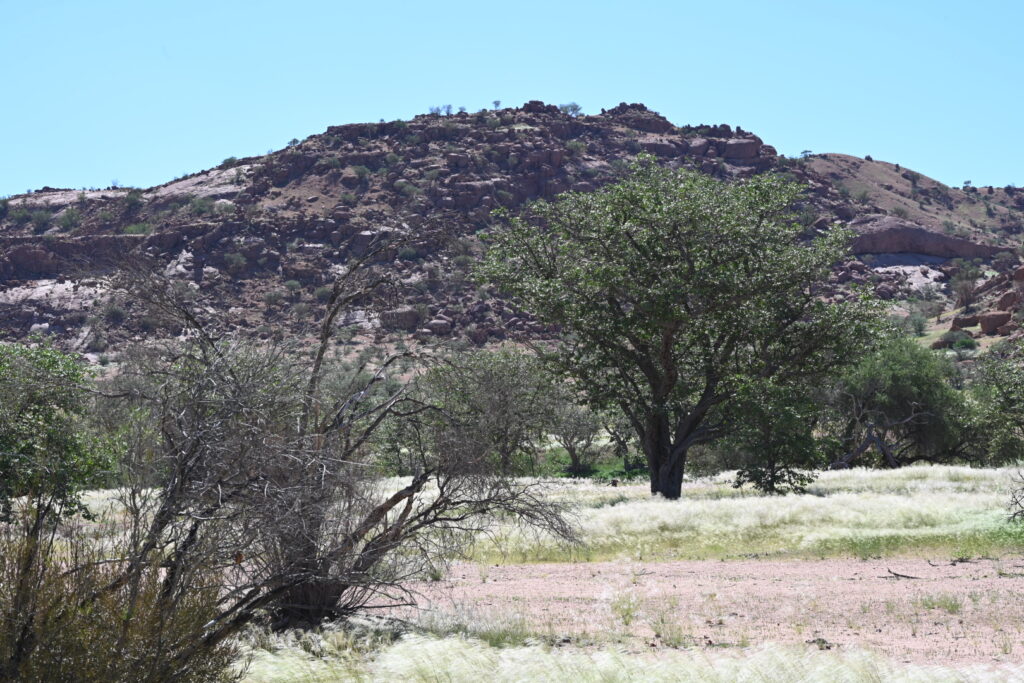
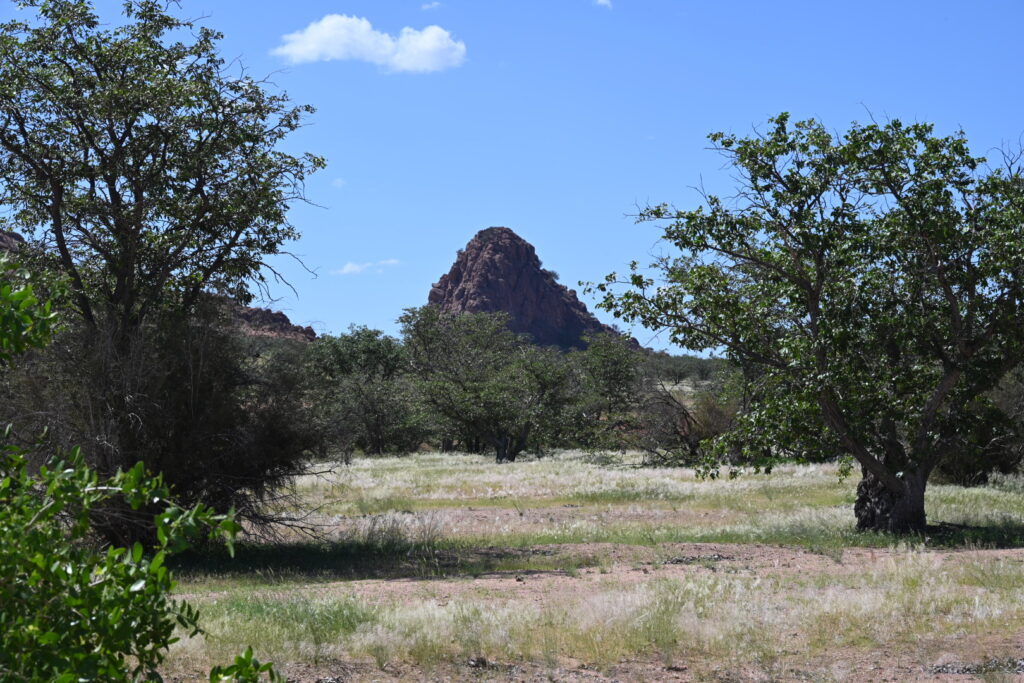
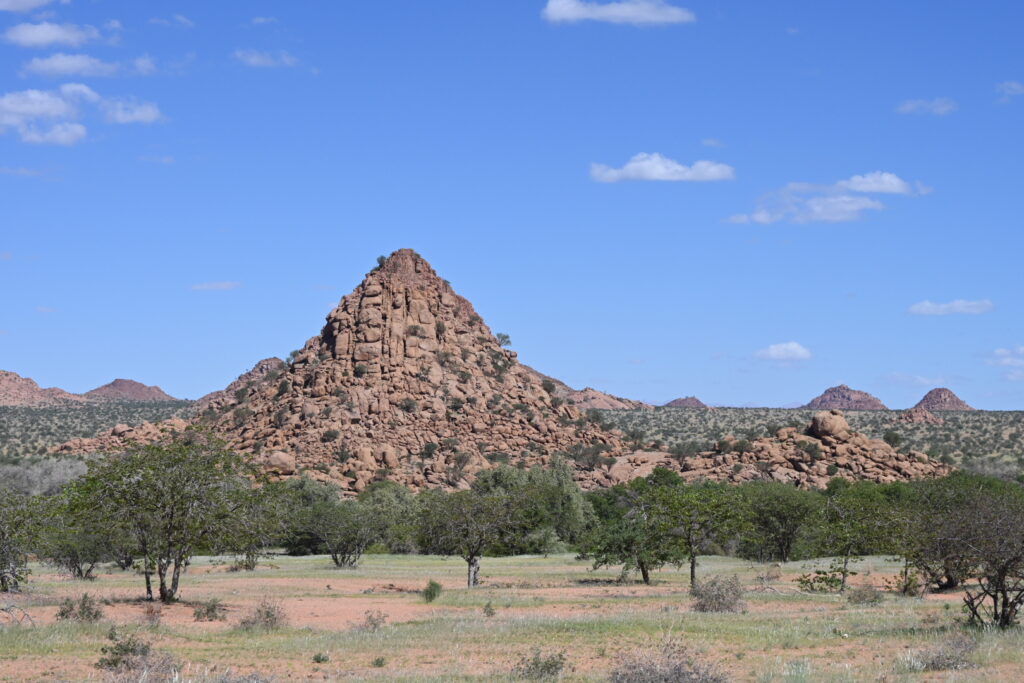
There’s even a heated pool – but we need to get to Twyfelfontein engravings before the visitor’s centre closes at around 4:30 pm. With huge force of will, the kids get back in our vehicle.
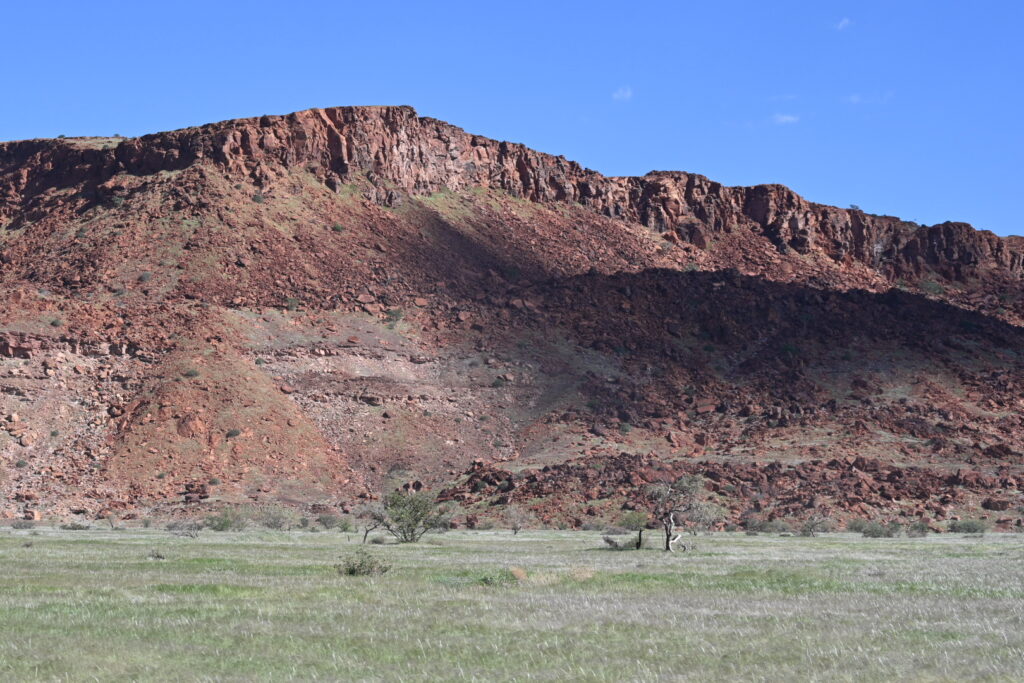
On the way, we pass the Damaraland Living Museum, a recreation of how the Damara people traditionally lived. Our itinerary initially called for a stop here, but the kids are hot and tired. So we’ll visit Twyfelfontein first and see how that goes.
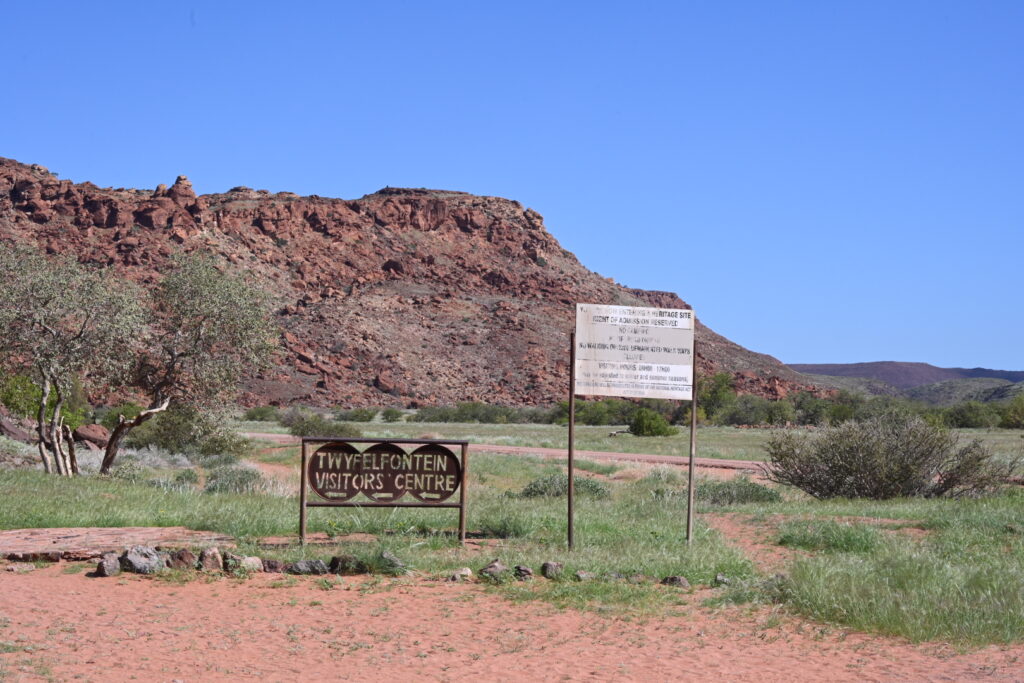
We reach the visitor’s centre, and Ewald hands us over to a local guide that will show us the engravings.
There’s a thirty minute walk to visit each of the engravings. Thankfully, the wind starts to pick up and the sun ducks behind a cloud as we start our tour.
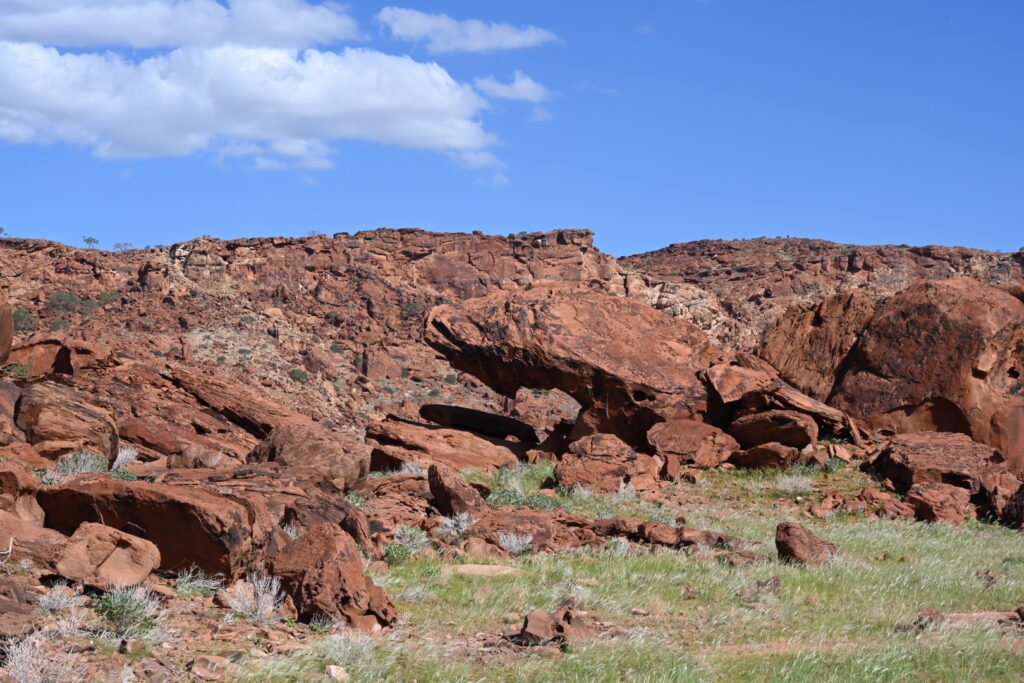
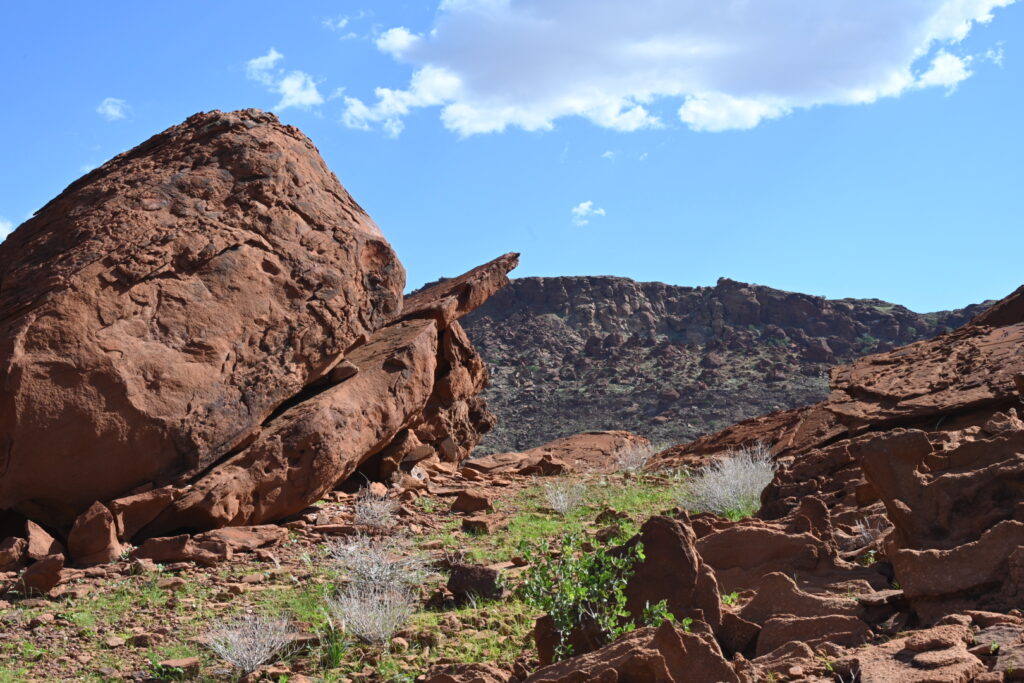
Twyfelfontein is one of the world’s largest concentration of petroglyphs, or stone engravings. Objects excavated from the region are believed to date back to the late Stone Age, and the engravings are believed to span a period of over 2,000 years.


There are a wide range of elements included in the engravings, including a range of different animals – from giraffes and antelope to seals and penguins – as well as maps of permanent and temporary water sources (the circles with and without dots, respectively) and representations of their cultural ‘medicine man’, as depicted with the lion with the long tail and human appendages.
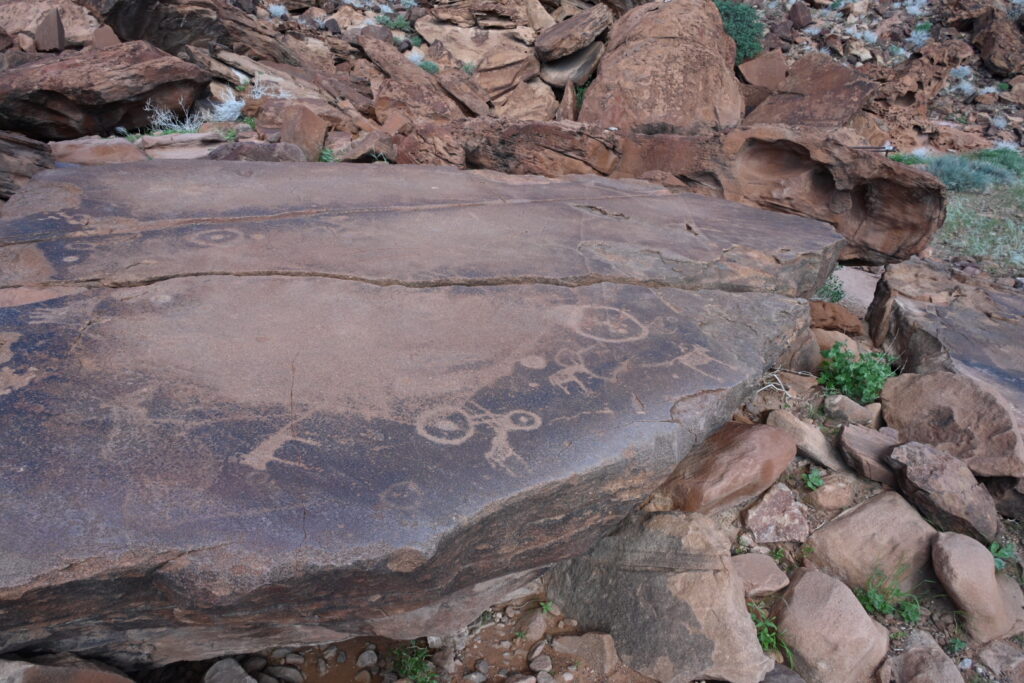
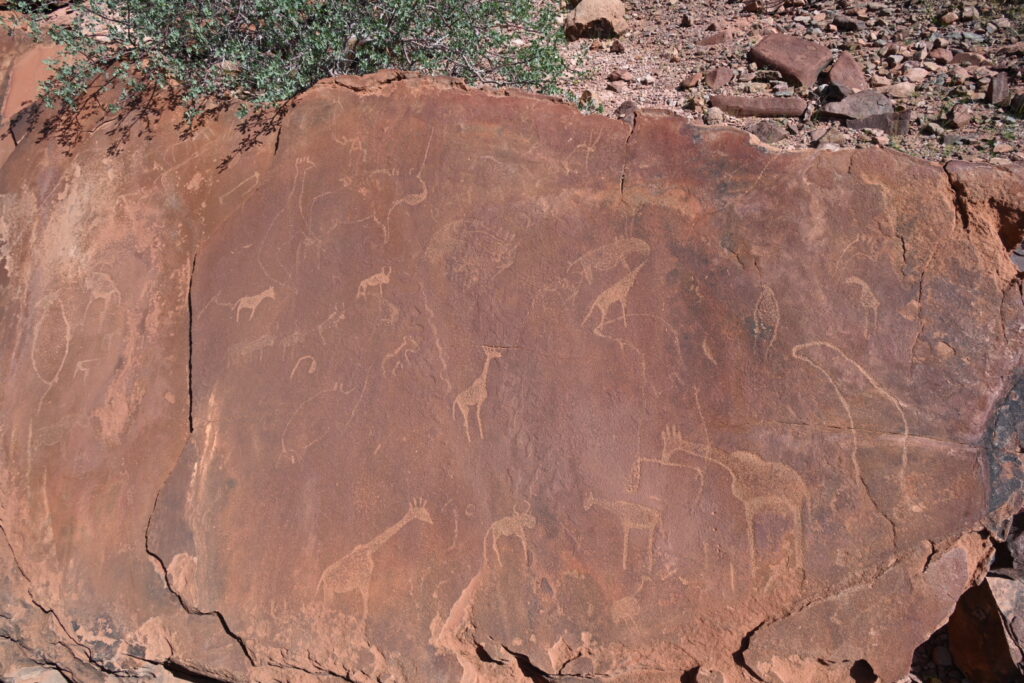
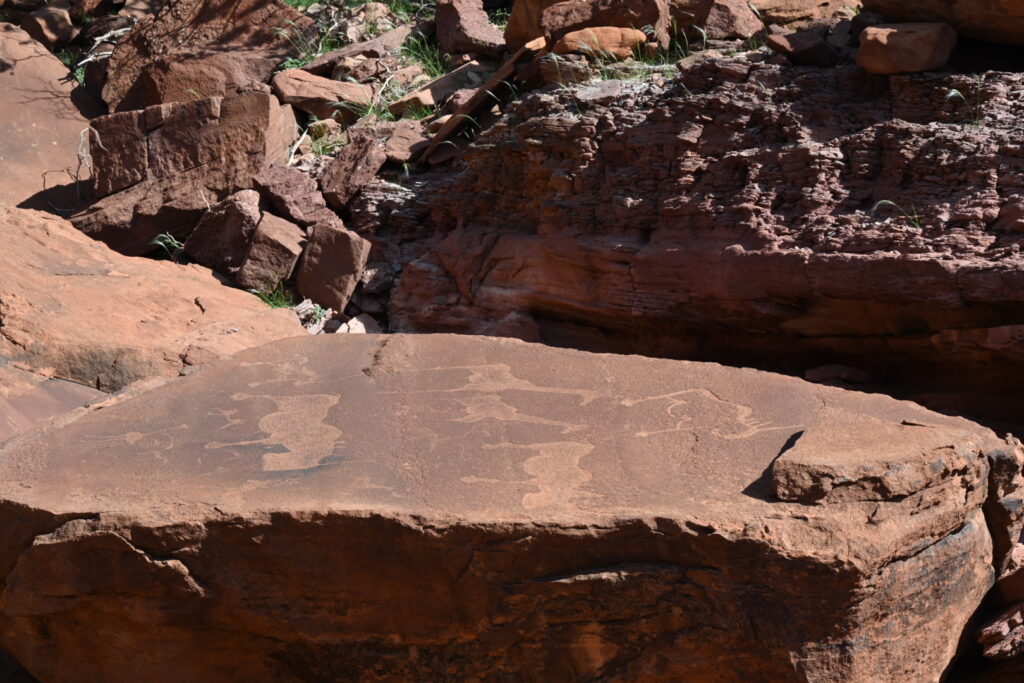
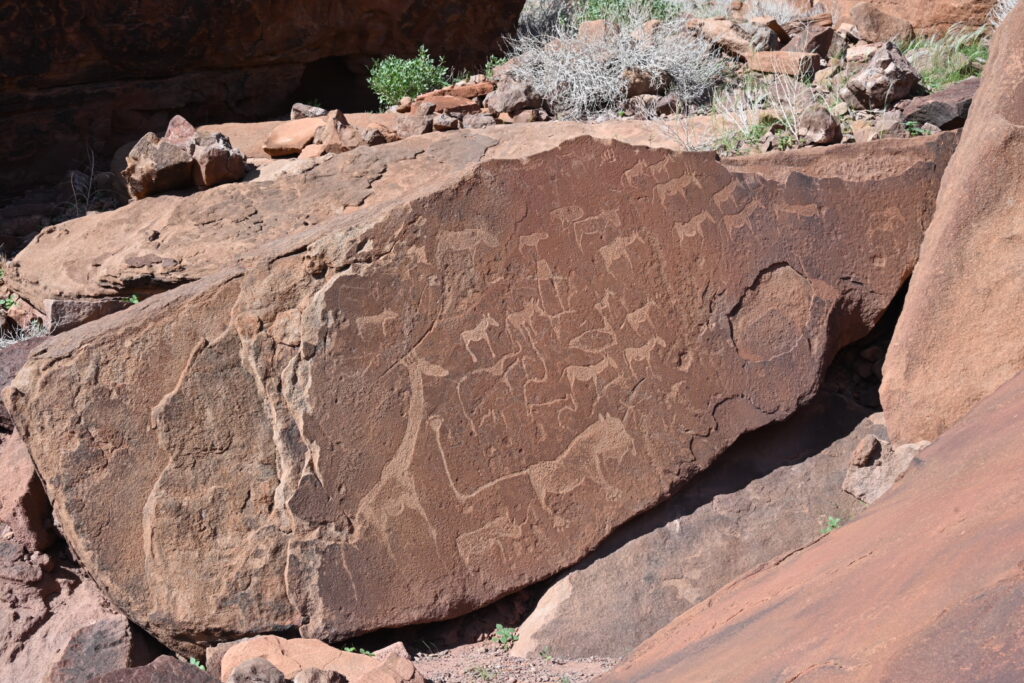
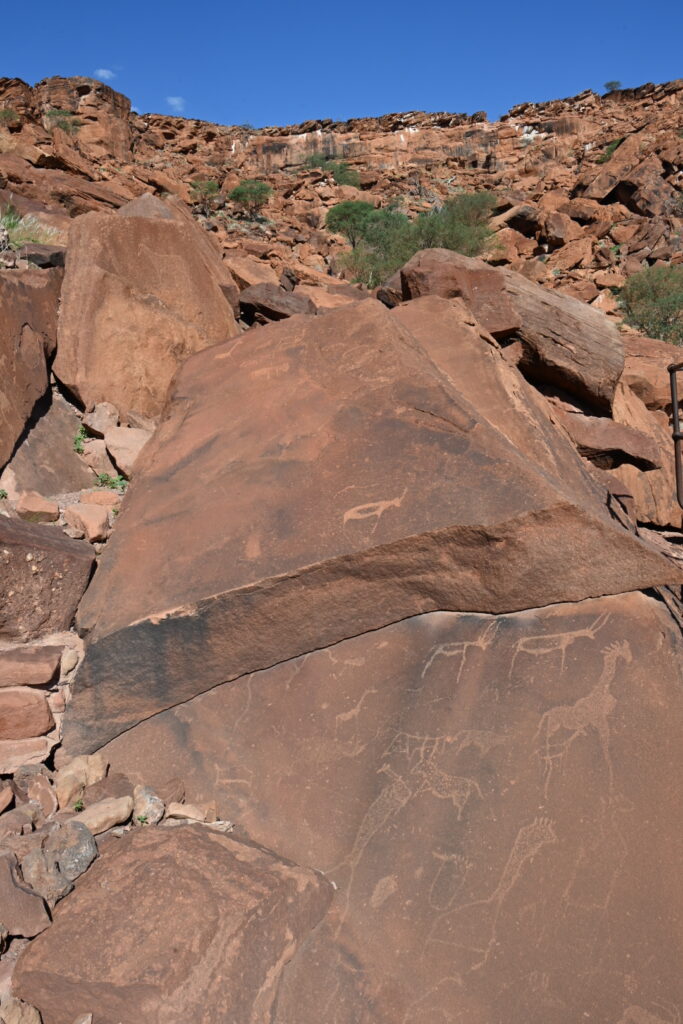
Twyfelfontein is Namibia’s first UNESCO world heritage site. Rock engravings in the area were initially reported by topographer Reinhard Maack, but this site was only formally investigated after an attempt at farming by David Levin in 1947. Twyfelfontein means ‘doubtful spring’, and there is still a ruined farmhouse in the area.

And the scenery continues to amaze:
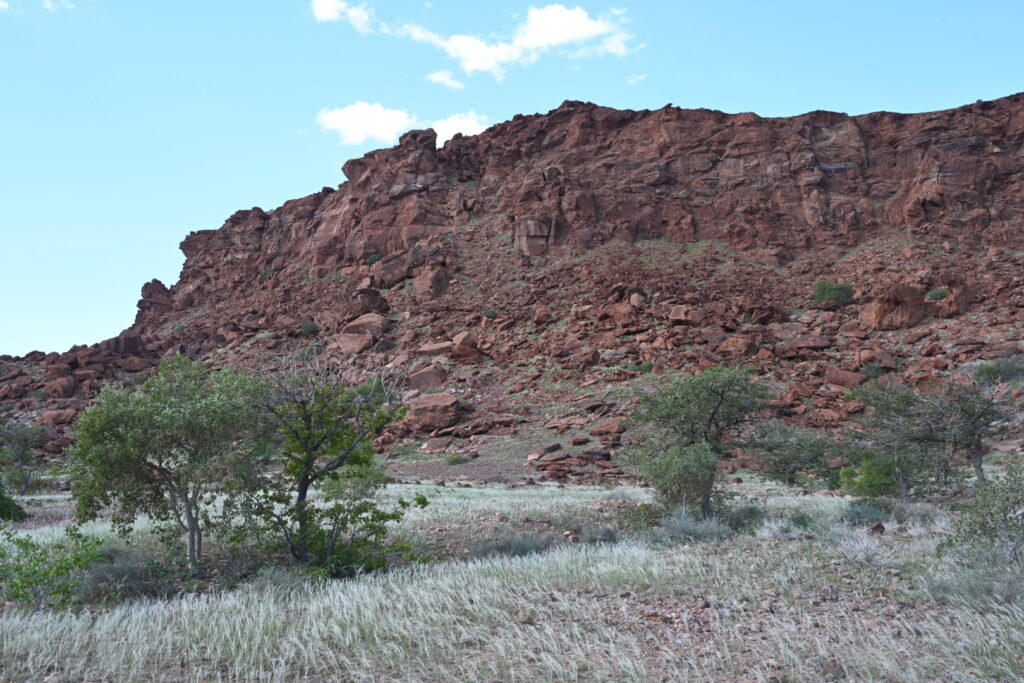
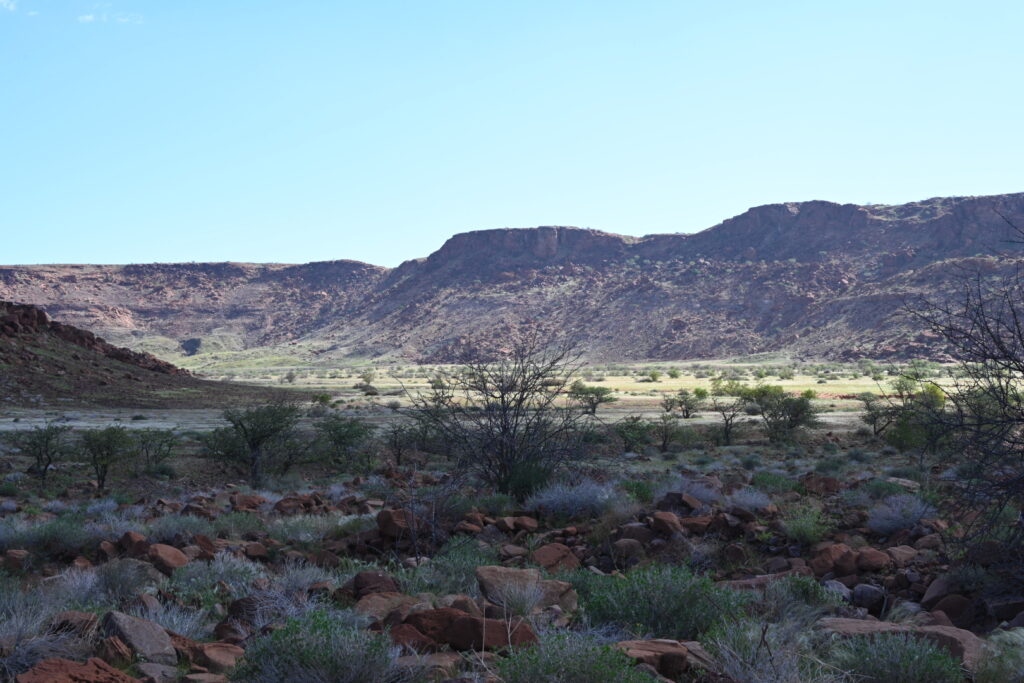
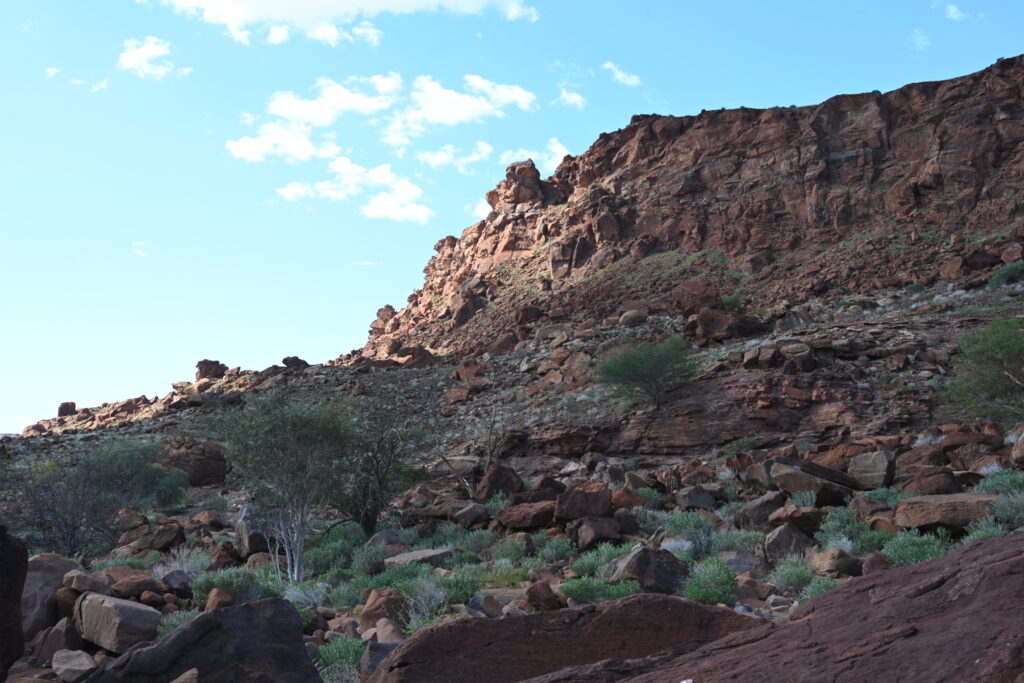
The sun comes out once more, and we all start to wilt in the heat – but the tour soon wraps, and we return to the reception for a nice, cool PowerAid.
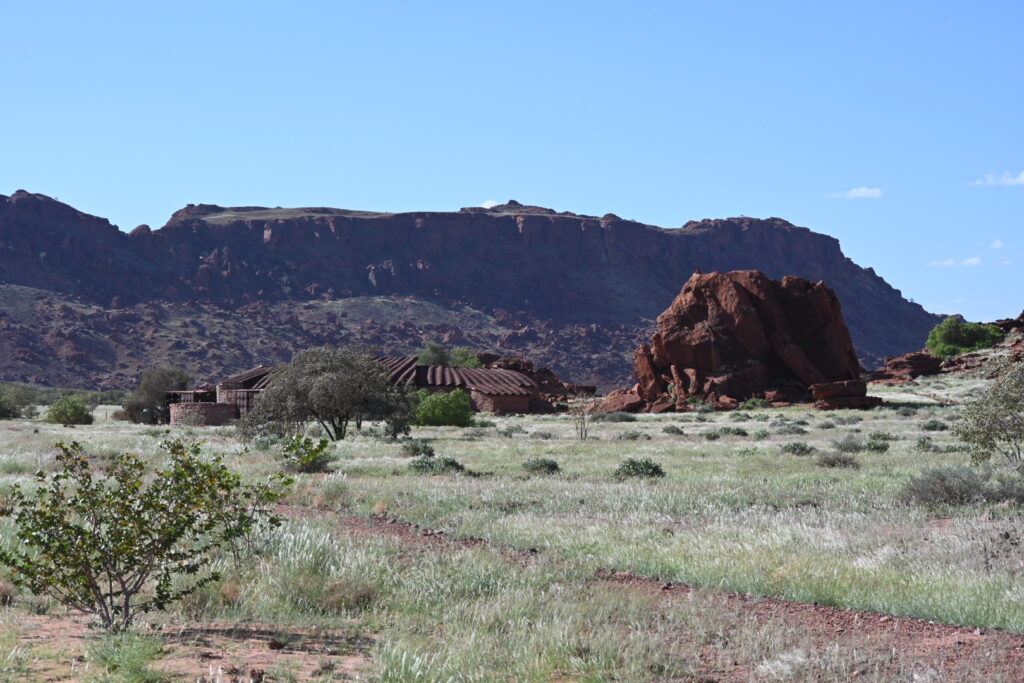
I don’t think I’ve ever drank one in a single sitting before.
We tip our local guide and say our goodbyes. Meanwhile, recent arrivals are told that they won’t be able to visit the entire exhibit. We’re glad we got here when we did.

There’s less than 15 minutes available to visit the Damaraland Living Musuem, so we pass to give the kids a break. We’re all very relieved to get back to Malanrus.
The kids get some time to chill out, while my wife and I attempt to upload the day’s post. The internet at our tent is unusable, and the internet at the main tent isn’t much better. Ah, well – tomorrow is another day.
We close the laptop and retire to the porch, where we admire the scenery with gin and tonics in hand. 6:30 pm arrives, and the staff starts a fire:
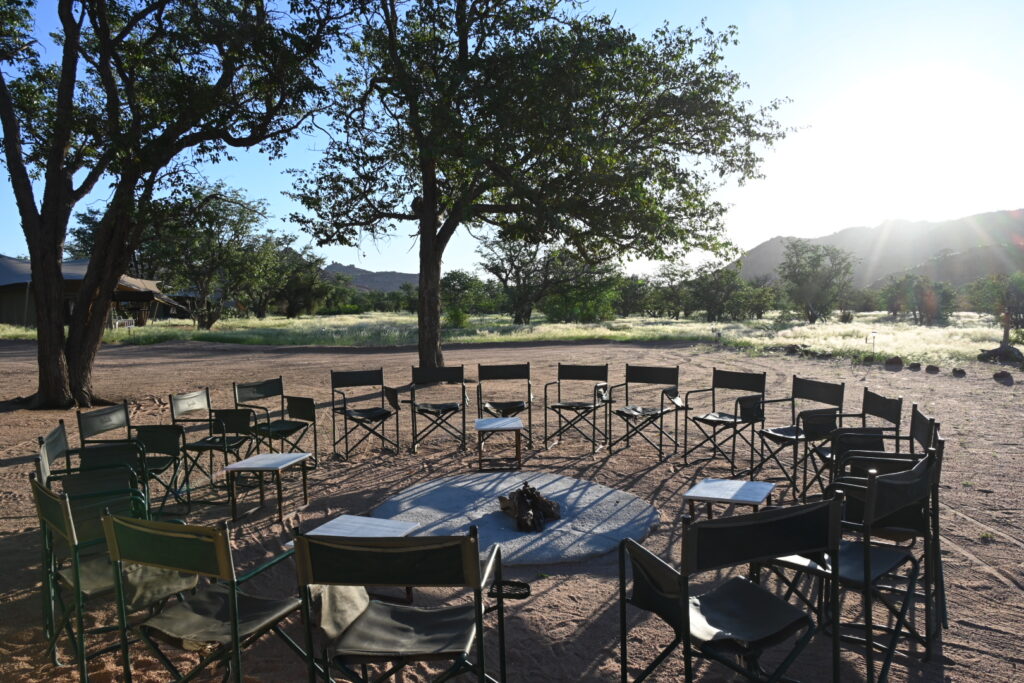
We chat briefly with our fellow guests, where we learn that Malanrus ran their own desert elephant tracking session earlier today – they were able to find some, but could only view them from a distance.
7 pm rolls around. The sun sets, and we head off for a brief council of war with Ewald to discuss the next few days’ worth of activities.
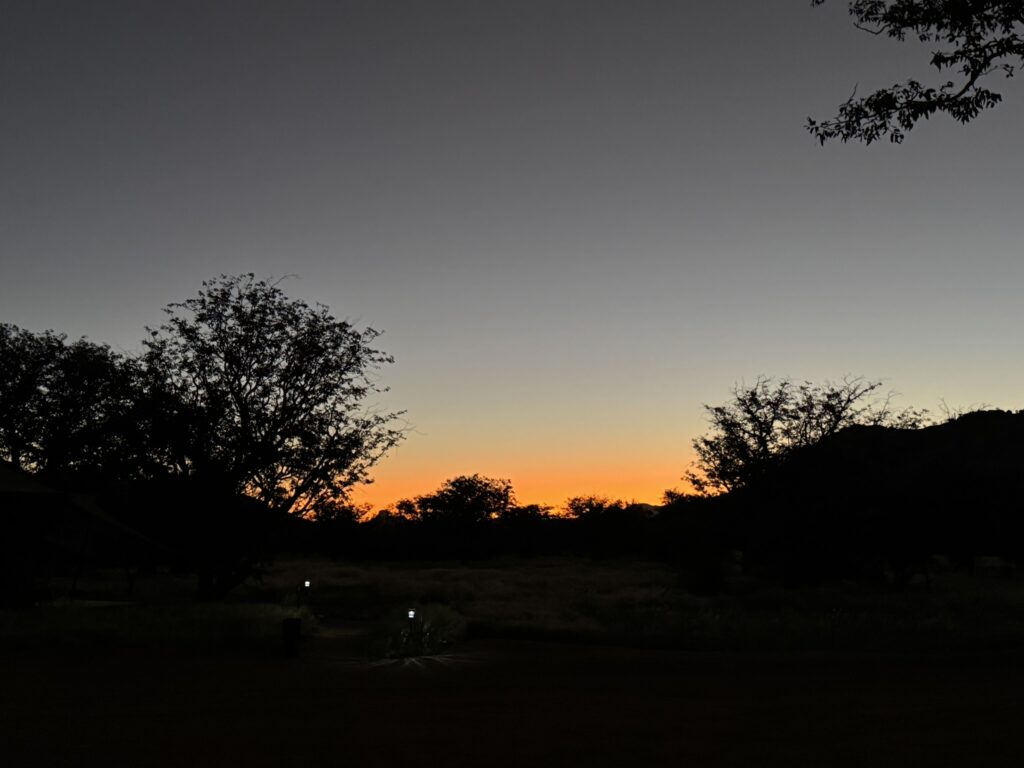
Ewald couldn’t arrange a game drive for tomorrow afternoon, but he did book two additional game drives the following day. He’s also going to work on another afternoon game drive at Onguma the Fort and a morning game drive at Okinjima plains camp.
We’re initially disappointed by the lost game drive. We consider having Ewald take us for a game drive instead, but instead decide to just take it easy tomorrow. There’s a watering hole at the camp and it’s a lovely place for sundowners, so that’s what we’re going to do instead.
Time for dinner. The menu is presented both in English and the local click language.
There’s a potato and mozzarella croquette to start:
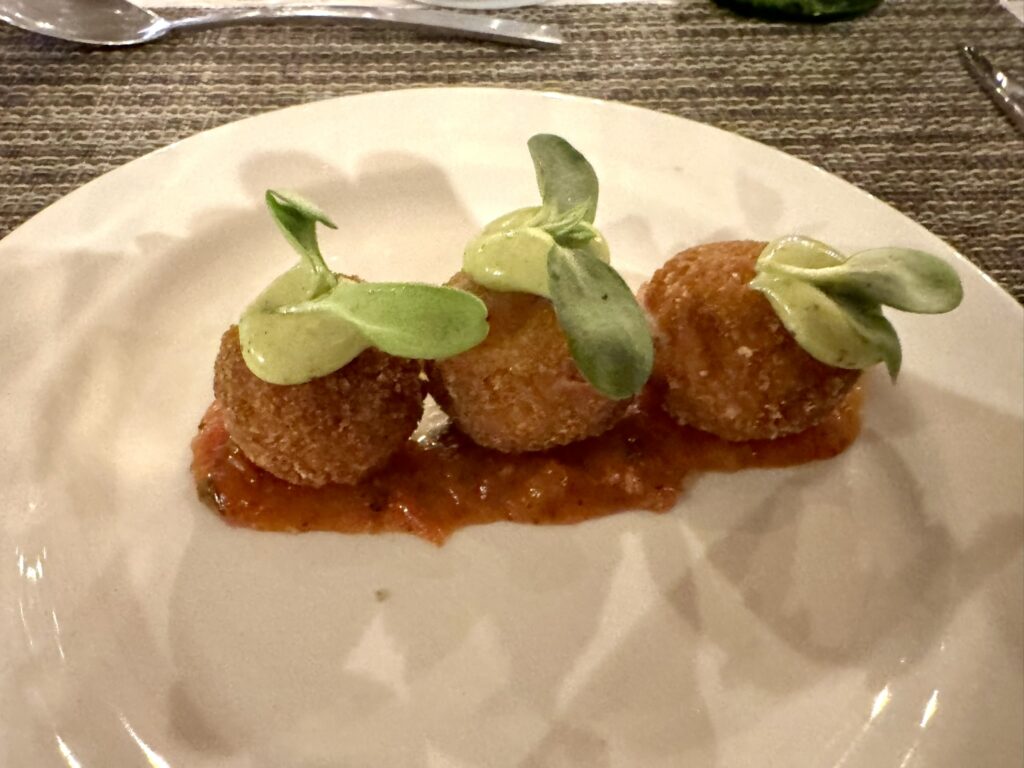
Followed by the main, parmesan encrusted fish with lemon herb rice:
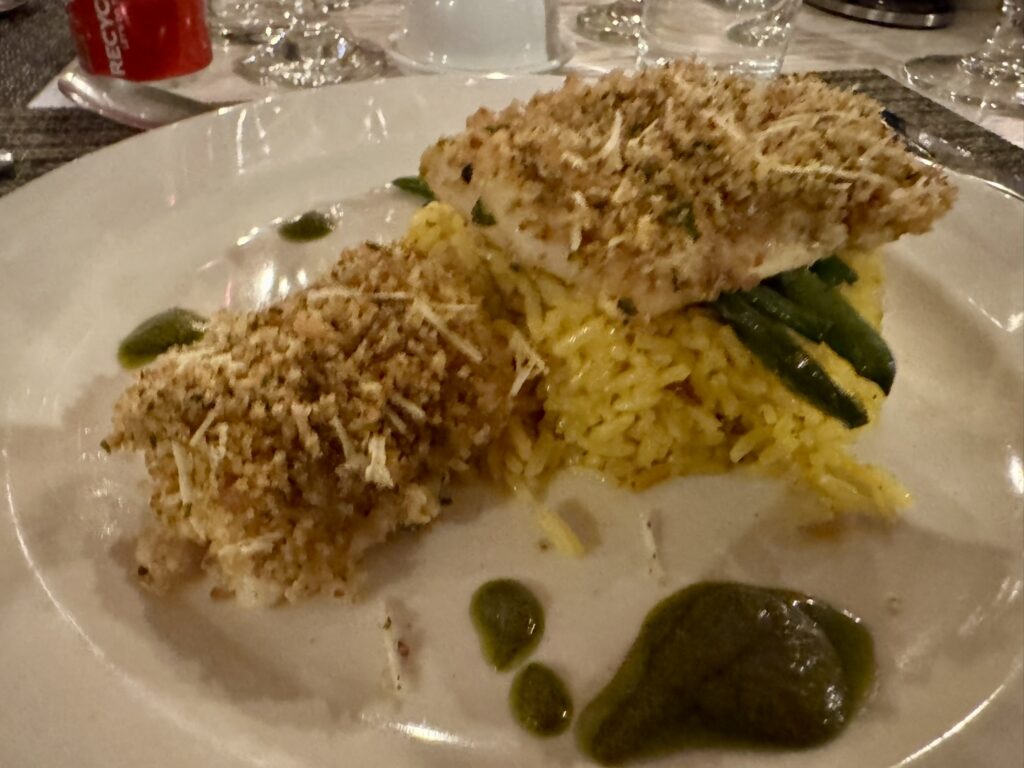
The kids order some pasta instead. We take solace in the fact that they’re not the only ones opting for simple comfort foods – the French family next to us does the same for their children.
And there’s a passionfruit mousse for dessert:
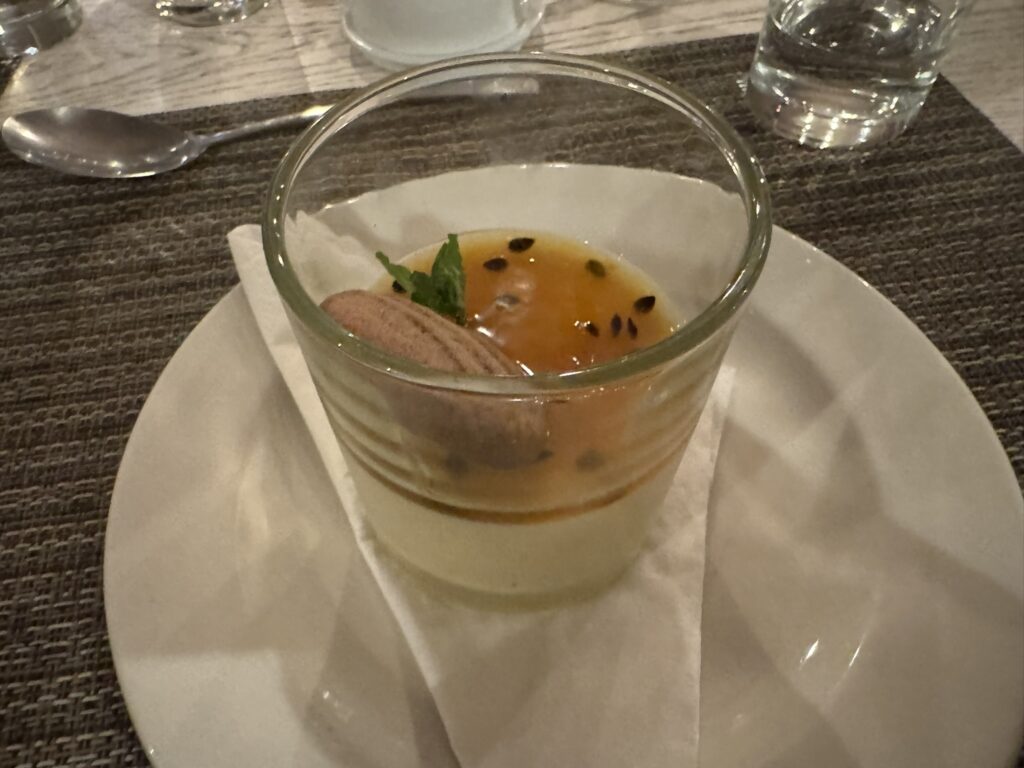
All very tasty, though the passionfruit mousse has a lot of seeds.
We retire to the tent, where my son discovers a scorpion in their bathroom.
You know the only thing worse than finding a scorpion just before bedtime?
Losing track of the scorpion.
Well, the good news is that my wife is eventually able to find the scorpion.
The bad news is that it is under my daughter’s pillow.
So, not the most restful start to the night – but full credit to my wife for handling both the scorpion hunt, and crunching the scorpion once it was eventually located.
Meanwhile, I’m taking a few more night sky photos.
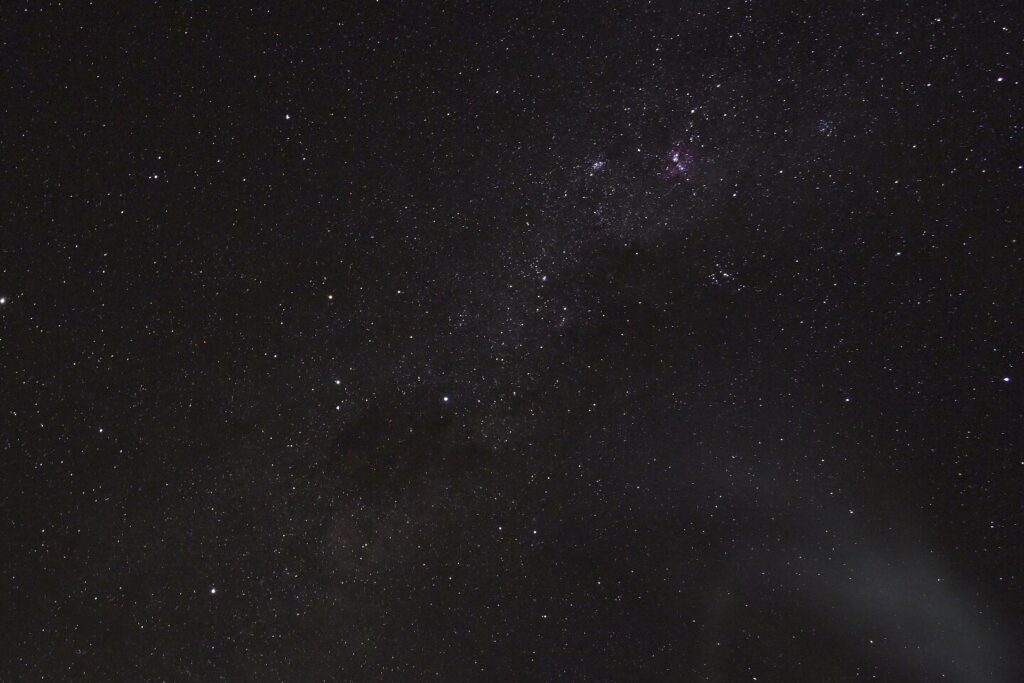
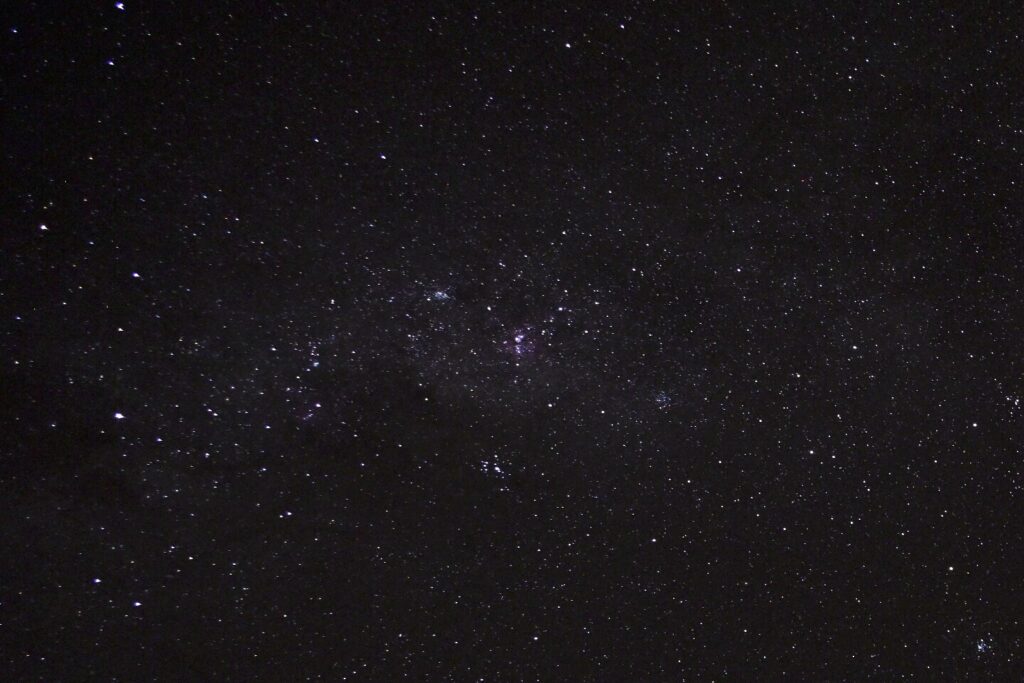
The small artifacts in front of the screen are reeds and bits of grass – I had the camera on the ground, propped up with a rock. Time to invest in a tripod, methinks.
And with the photos taken and the scorpion crunched, it is most definitely time for bed.
